What is School Management System Software?
A school management system is a piece of software created with the express purpose of overseeing educational operations. These systems provide functionality from applications and class enrollment to detailed performance monitoring and financials. They give users the ability to manage and track all of their information assets digitally from a single location. Requirements of School Management System Software include:
☑ Keeping track of students’ attendance.
☑ Providing exam schedules at regular intervals.
☑ Assisting in two-way communication with students and their parents.
☑ Registering new students.
☑ Administration management for both the faculty and the students.
☑ Managing the payment of fees.
☑ Offering new room facility features that will help the school’s branding.

What is the difference between a school management system (SMS) and a learning management system (LMS)?
Since LMS and SMS share many functions and capabilities, they are often mistaken for one another. This results in a lack of clarity about their distinct purposes.
The Learning Management System (LMS) is responsible for all aspects of the learning process, while the Student Management System (SMS) is responsible for managing student information and scheduling.
Here’s a table illustrating the differences.
LMS and SMS have administrative features, but the latter does not eliminate the need for other systems to handle the administration of instructional materials. In fact, the two systems should complement one another. When SMS and LMS are integrated, they create a relationship with students that is not only practical but also improves their student experience at an institution. When selecting an SMS and LMS, it is critical to consider their capabilities and assign specific tasks to each system, with the integration of some where possible and relevant. Integration eliminates duplicate data entry, resulting in faster data management and, ultimately, less manual work for everyone, as well as more accurate data management.
How School Management Software Works
Five different systems work together to run school management software: the educational, financial, employee, inventory, and task systems. Let’s examine them more closely.
📌 Educational system: This system focuses on the actual learning process. It is used to assist students in learning more efficiently, to plan classes, and to evaluate students for teachers.
📌 Financial systems: With this system, all school financial transactions can be tracked and required funds can be calculated. The financial systems are overseen by the school’s leadership.
📌 Employee system: This section evaluates the performance of the employees. KPIs and vacation balances should be clearly communicated to all staff members, including teachers, administrators, and support staff. All processes must be transparent, and this is especially important here.
📌 Inventory system: You must keep track of all the school’s supplies. As a result, inventory management relies heavily on the school management software’s inventory component.
📌 Task system: Everyone involved in the educational process, from students to teachers to administrators, must have a clear understanding of their roles and the goals they are charged with achieving. This is where the task system comes in. It gives users a personalized dashboard where they can keep tabs on their projects and their progress.
School Management System Software: Market statistics
The School Management Software market is massive, but there are several factors that influence or drive it aside from the vast pool of e-learning innovations. Entrepreneurs and start-ups seeking a piece of this lucrative market should pay close attention to the most critical aspects of its landscape, which are described below.
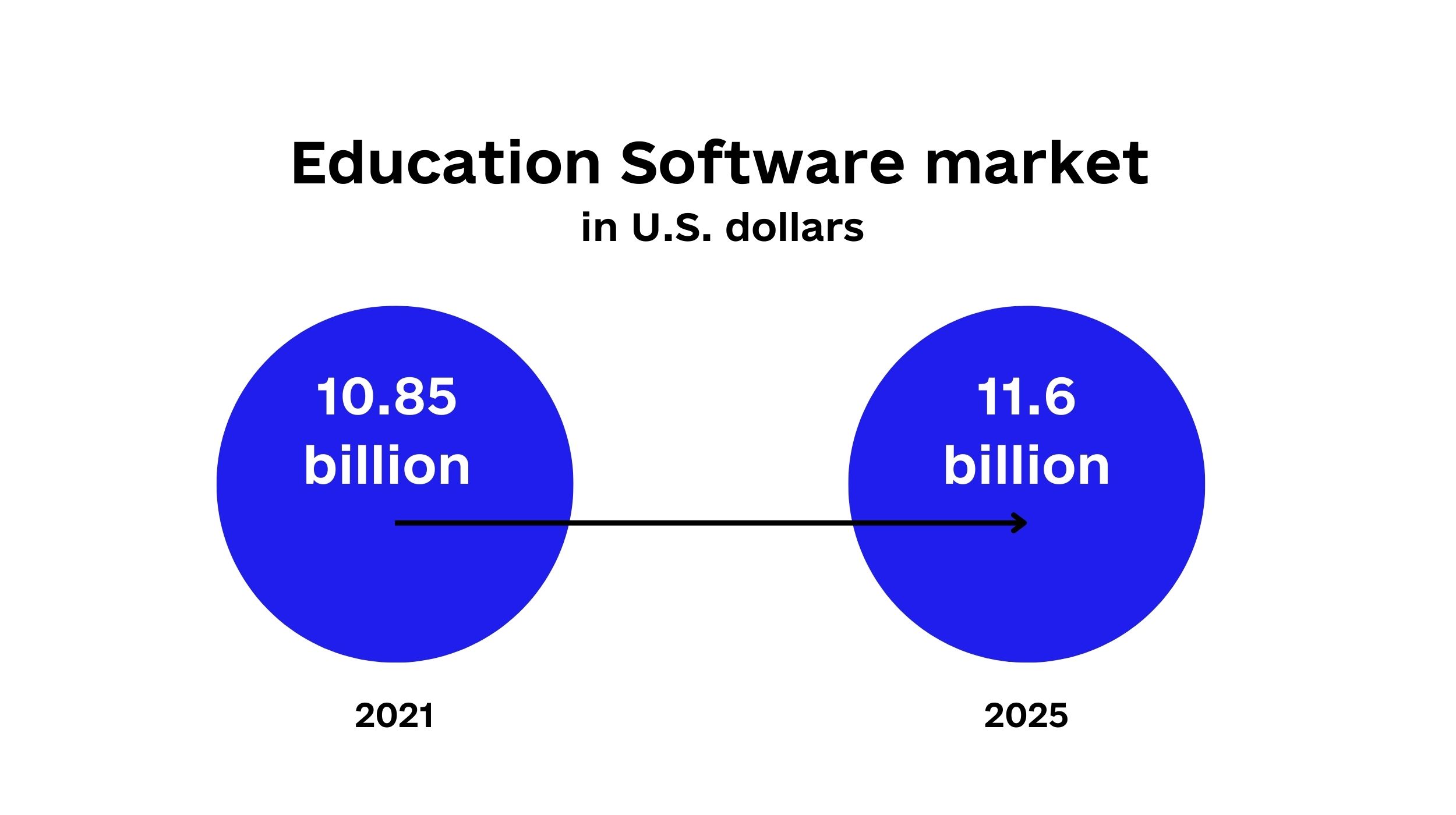
Forecasts say that the education software market as a whole will bring in around 10.85 billion U.S. dollars worldwide in 2021 , which is an increase of nearly $200 million from the year before. Projections suggest that this trend of strong growth will continue for years to come, reaching $11.6 billion by 2025.
But getting down to the SMS market:
📈 According to a detailed report by Market Research Future (MRFR), the School Management System market will grow at a compound annual growth rate of 17.7% to reach USD 8.5 billion by 2025. While the market’s gains and growth are obvious, where should investors look for the most promising opportunities?
The best-performing markets for SMS are North America, Europe, and Asia-Pacific. For context, North America dominates the worldwide market for school management systems. Europe currently holds the second spot, while Asia-Pacific has emerged as a profitable market in recent times.
Each market has its own set of key players. In general, we recognize the importance of COVID in the transition from the four walls of a school to digital management systems. Here are the main drivers, in addition to the pandemic and lockdowns.
- The need to implement modern student, staff, and financial management solutions.
- The need for collaboration, simplification of learning processes, and increased productivity.
- The proliferation of intelligent mobile devices.
With such a rapidly expanding market, some setbacks are unavoidable. So far, three have been spotted:
- Shortage of human resources.
- Budgetary constraints,
- The lack of customization options and expertise in the field.
- Segmentation
The school management market is split by component, deployment, application, end user, and geography. These segments let you assess specialized pockets of growth, market approaches, primary application areas, and target markets.
Here’s a visual representation of each segment.
Now that you understand the market, let’s talk about why you should build a School Management System.
Benefits of Student Management System
SMS has numerous advantages, which are tailored to a specific group of users. This includes students, parents, and school administrators. Keeping that in mind, we’ll look at the benefits of a School Management System.

For teachers
- Saves costs and time
It saves instructors valuable time that they would have spent on paperwork. This is done by automating daily tasks that take a lot of time, like making schedules, keeping track of attendance and talking to parents. Directors can also save time by using modules like payslip generation, online fee collection, transportation, and so on to their full potential. The software for running a school can also make different reports to help teachers and principals, which can save them money.
- Provides accurate students data reporting
Another benefit of school management software for school administrators and directors is the variety of reports generated within the software. These include graphical reports, summary reports, chart reports, age group reports, list reports, and detailed reports, all of which are accessible with a single click.
For parents
- Enhances interactions
Short Messaging Service (SMS) is a popular method for organizations to stay in touch with their customers’ parents. For parents, a quick text message might be all they need to learn something important. Mobile apps that improve communication are typically included in school management software. The transmission is sent as a push notification, and it also allows parents to communicate with one another.
- Streamlines fee management
It is nerve-wracking for parents to stand in long queues and wait several hours just to pay fees. Instead, the use of SMS amenities streamlines the process. Administrators are able to receive payments securely online in the same way that parents can make payments online.
For students
- Improves exams preparation
The students will have an easy time taking and distributing examinations. Even if the tests are administered in a different location, it is still possible to upload the results to the platform or communicate with the students and parents about how they should interpret those results. The administration of tests for multiple grade levels and courses becomes a piece of cake.
- Organizes courses and information in an easily accessible format
An SMS makes sure that all of the information on the courses is easily accessible and organized. Most students lose their textbooks and forget what they learned in class, so having a School Management System is a big plus.
Types of School Management Software
For sure, software for managing school operations provides remarkable benefits. But before building one, find out what model works best for you. The following section is dedicated to helping you decide.
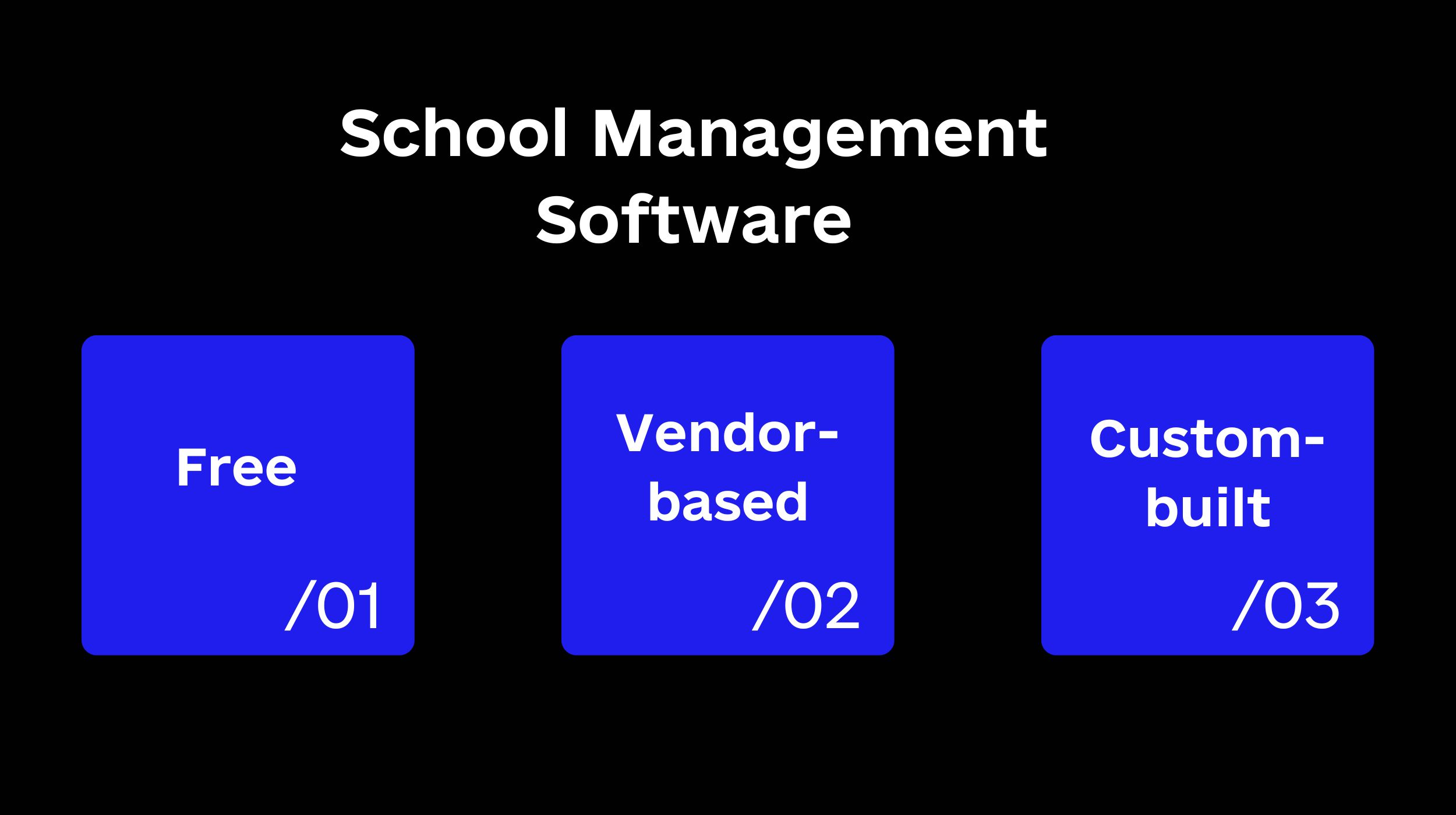
✔ Free: In this case, the functionality of the SMS is extremely limited, and there is no way to add any more features or modify the functionality of the ones that are already there. Zoho , Classter , and feKara are good examples of a free school management system.
✔ Vendor-based: The software is available in both free and paid versions in this model. A vendor-based SMS is the best option if you don’t want to wait for a customized system. Vendor systems are more adaptable than the free model. You can, for example, choose blocks that will repeat the system’s body. Support is provided by the vendors to ensure things run smoothly. An example of the vendor-based School Management Software is PowerSchool SIS , Gradelink , and EDRP .
✔ Custom-built: Customizable models not only offer more features but they can also be easily modified in the future. For schools that use CRM or ERP technology, new features can always be added. Typically, these kinds of systems are built from the ground up for individual customers.
Why should you choose the custom System for School Management?
It is more cost-effective to use a customizable platform because tailored solutions allow you to select exactly the functionalities you require. You have control over who you want to work with on the project. You can change several aspects of the task to suit your preferences, timing, and financial constraints. As a result, creating a customized solution is the best choice. Customizable School Management Systems have the following additional advantages:
- Optimization of working hours.
- Boost efficiency.
- Generate on-demand functionality at lower costs.
- Improve cooperation among students, teachers, and parents.
Ready to build a custom solution that can manage students and simplify administrative processes from one place? Let’s get started. Contact us now!
Key features of School Management Software
In this section of our guide on building a web-based management system, we’ll look at the core features to include.
- Student’s profile
- Information Dashboard
- Video calling and chats feature
- Access to training materials
- Class and assignment schedule
- Exam and test schedule
- Communication portal
- Upload and download files
- Data analysis and reports
- Attendance and leave management
- Class activity records
- Manage lesson progress
- Grade assignments, tests and exams
- Upload and share assignments
- Student performance tracking
- Upload and share lecture notes
- Remote teaching
- Manage student records
- Schedule classes and exams
- Video calls and chats with teachers
- Communication Portal
- Track student attendance
- Exam schedule
- Performance records
- Monitor student assignment
- Access tests records
- Access learning aids
- Fees and payment records
For school management
- Reporting and analytics
- Inquiries and admission checking
- Manage students records
- Students’ class performance monitoring
- Staff progress tracking
- Lesson progress monitoring
- Financial monitoring and fee tracking
Developing a School Management System: How to go from idea to launching your own SMS
Still, wondering how to build a School Management System? Follow these nine critical steps to ensure a successful product launch.

Step#1: Bring your ideas and research to life!
The first step toward owning your own SMS is to know what you want. Remember that the purpose of the software is determined by the problems it seeks to solve. So think about your goals and the types of solutions that can help you achieve them.
You will need a basic information storage architecture if you only want to create a digitized student information framework. How about building a portal where students and teachers can view schedules, submit homework, and make payments? In that case, you’ll need a complex solution.
Consider your target audience and then conduct market research. Learn about the market’s needs, what competitors are doing, and how to outperform them. Of course, a thorough market analysis will reveal much more. It is now up to you to make informed decisions based on the information you have received.
Step#2: Draw up a budget & monetization plan
You can get an idea of how much the program will cost with the help of an expert and the right tools. This way, you’ll figure out the Total Cost of Ownership (TCO) without leaving out important details that pump expenses in the long run.
But that’s not all.
You should also plan how to make money from your software in the same way that you plan how much you will spend on your ideas. The following is a list of potential models for monetizing your software.
- Software licensing solutions.
- Subscription business model.
- Freemium model.
- Open-source model.
- In-app purchases.
- In-app advertising.
- Partnership or sponsorship model.
- Pay-as-you-go model.
Step#3: Find a dedicated development team
Once you know what your program’s goals are and how much it will cost, it’s time to find software developers who can take care of the whole project. Having the right business partners can make a big difference in how successful you are.
Don’t forget to research the company’s portfolio and reviews from prior clients. Ensure they have hands-on skills. You can also check our guide on how to hire dedicated software developers to help you get started.
You will need the following team members to build a school administration software:
- Testing and QA experts
- UI/UX experts
- A project manager
Step#4: Choose the tech stack and platform
It’s now time to decide on a technology stack. To a large extent, the technology you use is determined by the chosen platform. Use technologies like JavaScript or Python if you’re making it for the web, for example
In the same way, if you’re making it for mobile devices, you’ll need Android and other mobile app development technologies. In order to create software that works across multiple platforms, you will need to employ a variety of tools and techniques. Alternately, a cross-platform technology such as Flutter may be used instead.
Step#5: Implement UI/UX
Designing the app’s user interface and user experience (UX and UI) can begin after the architectural and design structures have been set up. All of the app’s screens, including buttons and transitions, must be created from scratch. It is possible to move forward with your design once you have completed the previous steps in a way that is both functional and in keeping with the school’s unique brand image.
Step#6: Develop and test your School Management Software
It is highly recommended that during the software development, the requirements of each user group be taken into consideration. A three-step process of module development is followed when creating the modules themselves. At each stage of development, it is absolutely necessary to perform exhaustive testing of the program on all relevant devices. When a bug is found and fixed in the early stages of development, the team does not need to redo a lot of the steps. It is possible to save a significant amount of time, effort, and money by conducting exhaustive testing at the beginning of the process.
Step#7: Launch the SMS and get user feedback
The subsequent step is to put the finished product on the market. The application has to be adaptable to accommodate the requirements of diverse users. Everyone who uses the app should have a solid understanding of how it works. Training for the staff as well as presentations for both the parents and the students may be a part of this. Even a minor setback in performance can have a negative impact on the overall educational delivery process and administration of the school.
Step#8: Start maintenance
Building a student management system is an ongoing process even after the final product is made available to users. Maintaining and enhancing your solution on all fronts should be an ongoing effort if you want it to remain relevant in the face of continuously shifting user expectations and intensely competitive markets.
E-learning application development: Process, Features, and Cost
Cost of building a School Management System: What determines the price?
It is critical for entrepreneurs interested in school management software development services to understand the cost. Let’s discuss the overall development cost of school management software and some of the factors that may influence its price.
Here are a few things to consider when estimating the price of school management software.
- Software platform
- Functionality
- Team structure
Although precise pricing is not possible, we can provide a rough estimate of the cost to develop school management system software. This would range between $12,000 and $35,000. The estimated cost may vary depending on the various factors mentioned above. Some businesses also charge for development and maintenance based on the number of students enrolled in the institution. The cost of this model could range anywhere from $1.2 to $25 per student.
Things to consider before building software for school management
Apart from the above-stated list, there are some other factors as well that can affect the total cost of school management software.
- Great UI/UX: In order to attract users, software must have an impressive and responsive UI/UX, but this requires a large team of designers. All in all, the software design should be less complicated and more visually appealing.
- Location-based pricing: Hourly rates vary by country and can have a significant impact on the overall cost of your software. The e-learning app development company and developers you are hiring or outsourcing should first discuss their hourly rates before making a decision.
- Features: The number of features added to the software can also cause cost variations. Furthermore, any third-party integration within the Software will incur additional costs.
- Maintenance: Some companies charge an additional fee for software maintenance after the development of eLearning portals. As a result, it may be best if you looked after it.
The growing use of digital technology in education will necessitate significant changes in educational institutions’ operations in the coming years. Rather than a passing fad, in the new reality, this will be a long-term strategy that will shape the course of history. To put your company on the map and into the competition, you must have a robust SMS solution. Hopefully, this post on how to build a school management system gets you started in the right direction.
Should you have questions or concerns about developing a student management system or hiring a development team for the project, 📩 contact us. We are more than happy to help!
How to Build a Job Search Website: Extended Guide [5 Key Steps]
How To Build A B2B Marketplace: Steps, Features and Pitfalls
How to Make an App Like Udemy in 2022: Features, Costs, and Tech Stack
How to Build a SaaS Product from Scratch [A Practical Guide]
Subscribe to new posts
Get weekly updates on the newest design stories, case studies and tips right in your mailbox.
What is a school management system (SMS)?
SMS is a program that a school uses to track student admissions, registration statuses, parent-school interaction, inventories, coursework, financials, and other information.
What should I look for in a school management system?
You should look for flexibility, accessibility, reliability, scalability, support, and ease of use.
What are the five phases to building an effective management system?
Discovery; Architectural; UI/UX development; SMS Software development Launch and feedback
How much does a school management system cost?
Developing a school management system costs between $12,000 and $35,000.
LEAVE A COMMENT Cancel reply
Save my name, email, and website in this browser for the next time I comment.
No comments yet. Give us your impression about this article.
What our clients are saying

ServiceTrade is a software as a service platform that manages job scheduling, technician scheduling and efficient routing for single or multiple offices in an easy user interface. Documentation of the work performed is stored online and delivered to customers’ inboxes for always-on access to service history. Online communication and coordination between field technicians, the home office, and the customer make each appointment more professional.

Brian Smithwick
Chief Executive Officer
It was an excellent collaboration! I will engage with Code&Care again because it’s been a very valuable experience for our project. I must say their team delivered results faster than expected.

Pocketbill is an online cash register and software for doctors, small business owners, psychotherapists, psychologists or physiotherapists, masseurs, hairdressers or cosmetic studios as well as yoga studios.

Helmut Chlebecek
It is a pleasure to work with this team. Great job. Will be cooperating again.

DivisionX was founded in 1998 with a simple aim and passion: become the experts in creating eCommerce solutions that are simple to use and stand out from the crowd.

Ataollah Etemadi
Great job, professionally done by an expert and delivered on time. The Code&Care developers are very enterprising, responsive and result-driven. I was very satisfied with our cooperation!

Pesmel has more than 40 years of experience in delivering solutions that improve material flows and logistics at different types of manufacturing facilities. We focus on serving customers around the world in the pulp and paper, metals and tire manufacturing industries.

Mikko Maki-Rahkola
Board Member
Good job Andrew & the whole Code&Care team! We were very happy with your contributions and will definitely co-operate with you also in the future. Especially appreciated your openness and prompt communication at all times, it was fun to work together on the assignment.

We advise and accompany medium-sized companies on their ongoing path to digital transformation. The basis for the change process, also known as “digital change” in companies, is a digital infrastructure and digital technologies from which new business models emerge.

Frank Reißmann
Senior Technology Advisor & Founder
Very good work! Code&Care team has been able to meet all our needs. Their team does not let things drop. They’re good at taking ownership of the task and making sure it’s performing well. Our cooperation was exceptional!

Celestial Technology is my private technology consultancy that heavily focuses on research and development in the blockchain and financial technology sectors.

Chris Cashwell
Technical Director
Andrew and all his team actually care about the code quality, which is really hard to find in other outsourcing companies. Also, I have been impressed with their ability to communicate so effectively and manage teamwork. Great team! Thank you for our cooperation.

Epic Culture works with organizations to build amazing company cultures. Our mission is to change the culture of businesses everywhere, so that everyone loves what they do.

Josh Sweeney
I enjoyed working with Andrew and his team. Very flexible and highly professional company! They are really responsible for the code quality.
Are you ready to create an awesome product?
Partner with us to overcome your web development challenges!
Please, fill out this application form
- Request a Demo
The Evolution of the School Management System: PART 2

...And we're back to transport you further along the evolutionary timeline - unearthing even more fascinating insights in our special school management system origin story.
Moving into the 1980s with Reagan as our President, the government was on a mission to improve the quality of education.
After a government examination of the American public school system, it was found that students were underperforming, and in 1983 the infamous “A Nation at Risk: The Imperative for Educational Reform” report was published.
The report detailed our American public schools’ failings and included a long list of recommendations for improvement.
Now that schools were under the microscope, data collection was critical, and the need for programs to handle all of that data was pressing.
By the mid- ’80s, districts were creating IT staff and collecting data. Still, the programs that offered solutions just either weren't compatible with the computers the schools already had or were too expensive to purchase.
In the early part of the 1980s, Philip Neal , a teacher at Lea Manor High School, developed the first School Information Management System. This system started as a way for teachers to collect student data easily and communicate with parents but due to Neal’s future-forward thinking and exceptional programming skills, it quickly evolved into something much more.
As the ’90s got underway, personal computers began to impact the classroom, and by 1997 districts had added 500,000 computers for administrative use.
Now having more computer access combined with internet technology, schools were in the perfect position to employ a student information system that had much more functionality than simple input and output of data.
In the 1990s, management systems started to gain traction in schools as different companies began creating systems and marketing them to school districts.
These programs came in a lot of shapes and sizes with overlapping terms and functionalities. You may know the terms to be LMS (learning management system), SIMS (School Information Management System), MIS (Management Information System), or SMS (School or Student Management System).
Another big wave of technology that catapulted the School Information System’s popularity was the inception of cloud-based technology. It brought us Software as a service or Saas, which meant increased compatibility, endless amounts of data storage, and the ability to communicate from anywhere.
The school management system has evolved from a basic way to handle administrative needs into a system that has changed the way schools operate.
The Future of School Management Systems
The SMS is designed to streamline all of the school processes.
It not only simplifies the admissions and enrollment process, but it can generate professional reports with data from attendance, exams, assignments, and teacher feedback.
An SMS allows teachers to share assignments and easily communicate with students and parents.
Administrators can use an SMS to track performance and learning levels using assessment data. It has a shareable integrated calendar making it easy for the school to communicate important events with parents and the community.
Some School Management Systems, like MySchool , even allow you to manage campaigns, donors, and donations and invoice and track payments to import into your existing accounting system.
To keep up with each digital age, these systems continue to evolve and their features become more enhanced. In fact, it is predicted that more and more schools will adopt the SMS to provide powerful data analytics that can be used to inform a school’s decision-making process.
According to Mordor Intelligence , “The school information management system is expected to reach a CAGR of 13.5% during the forecast period (2021-2026). This is the predicted rate of return in investment terms. And, that makes sense considering the push towards digitalization in education, e-learning, and improving the quality of education taking priority.
If you are interested in learning more about how an all-in-one platform can meet your school’s information management needs, please book a free demo today.
Related Posts
Birth of the school management system q&a with the man behind the code, the evolution of the school management system: part 1, 5 ways to tell if your school management system is future-proof.
Current Trends in School Management: School Leadership in Education 4.0
- Open Access
- First Online: 31 May 2022
Cite this chapter
You have full access to this open access chapter

- Münevver Çetin 5 &
- İsmail Karsantık 6
Part of the book series: Maarif Global Education Series ((MGES))
9432 Accesses
1 Citations
9 Altmetric
Meeting the needs of industrial development and reflecting the emerging demands onto the field of education has led to the emergence of Education 4.0 and initiated pedagogical, cultural, and managerial transformation in education in this direction. As a result of this transformation, macroscale structures and policies have been replaced by a microscale, web-oriented, local government paradigm. This section discusses current trends in education management and school leadership which are examined in the light of new education and management paradigms. In this direction, the shift in the education management paradigm, the sources of change, the role of school leaders in organizational development, the expected characteristics of school leaders in Education 4.0, and the use of the Internet of Things in education management and monitoring systems are addressed. In Education 4.0, the concepts of innovation management, digital literacy, productivity, collective participation in management and decisions, education communities, and capacity development are prominent in school leadership. This section emphasizes that strategic leaders who are able to adapt to the paradigm shift contribute and direct the formation of school culture and values. In this direction, the importance of organizing trainings for developing leadership skills and raising leaders who will help to restructure schools and shape cultural trends are underlined in the chapter. Emphasis is placed on the importance of raising leaders with technological skills who can use multi-channel communication strategies in school management.
You have full access to this open access chapter, Download chapter PDF
Similar content being viewed by others

School Leadership 4.0: Are We Ready?

Same, but Different? Digital Transformation in Swiss Vocational Schools from the Perspectives of School Management and Teachers

The Critical Role of Leadership for Education Transformation with Successful Technology Implementation
- School management
- Education 4.0
- Internet of things
Education is a dynamic and innovative process. Throughout history, it has been affected by various social and scientific developments and has been exposed to change and innovation, which have resulted in its present form. The importance of preparing a training plan for increasing the effectiveness of educational institutions and of determining the necessary strategies for being able to apply those plans is increasing daily. The prepared education plans are expected to contribute to the sustainability of school development. Managing, changing, and improving organizational conditions; participating in decision making; and learning and teaching strategies by appropriately evaluating organizational culture are necessary in this context. Here, the biggest role falls upon school leaders. Developing vision and mission, preparing and implementing school development plans and strategies, improving organizational climate, creating communities that feel a sense of belonging to the institution, keeping communication channels open, increasing and ensuring coordination, developing critical thinking skills, being innovative, and managing change most of all can be considered as the competencies expected from school leaders of the twenty-first century. In today’s world where change happens quickly, leaders prefer online methods that will facilitate the institution’s adaptation to the environment more quickly for meeting the changing needs of society. In this direction, the features of Education 4.0, which has emerged as the current education paradigm, will bring education systems closer to the center of life. This center is expected to have school culture and values that include change in a way that can adapt to society. Education 4.0 can be stated to have a structure that supports coordinated work by replacing the competitive cultural understanding with the collaborative cultural understanding. Having leaders contribute to the organization’s adaptation to the use of technology in managerial processes by responding to global needs is important.
Historical Process of the Management Concept
As old as human history, the concept of management (Mandell et al., 1981 ) emerged with changing perspectives, beliefs, and goals in different civilizations and different fields (education, public, organization). The concept of management, having succeeded in making a name for itself by recognizing the Industrial Revolution, spread rapidly toward the end of the eighteenth century, especially in Europe. When examining the developmental process of management theories, they are seen to be discussed under three headings (Etzioni, 1964 ): the classical management approach, the human relations approach, and the structuralist approach. While putting forward the scientific management theory based on organizational efficiency, Taylor ( 1919 ) shared his belief that supervision activities should be maintained at a high level. Targeting the maximum production capacity, Taylor stated that workforce losses might be able to be minimized by following scientific methods. In this respect, the classical management approach ignores the social and psychological dimensions of the organization (Bursalıoğlu, 2010 ). Therefore, the educational administrator of today can be stated to have moved away from classical educational theories, to be sensitive to the social and psychological dimensions of the school, and to have roles and responsibilities that enable and direct the development of culture in communication with their environment.
Traditional management approaches can be stated to emphasize functionality rather than social perspective. Functional hierarchical management has been expressed as the basic management paradigm for nearly 200 years (Jamali, 2005 ). The classical management system can meet needs when markets, products, and technologies change slowly (Turner & Keegan, 1999 ). Rapid globalization has been one of the most striking aspects of the new century, especially since the rapid development of information technology in the last two decades (Brown, 1999 ). The weaknesses and limitations of the system have gradually emerged with globalization and technological innovations. The management paradigm an administrator adopts is effective in overcoming those limitations. In cases where administrators adopt the modern management paradigm, the difficulties and limitations related to adapting to innovations are considered to be overcome more easily.
Establishing and developing relationships based on rationality are important for managing change effectively. The new perspective on management in the twenty-first century is based on the ability to cope with constant change, not stability, and is built upon work networks, changing partnerships, alliances, and technological advantages rather than hierarchies (Carnall, 2003 ). The new management paradigm comes together around teamwork, participation and learning, communication, integration, cooperation and collaboration with stakeholders and suppliers through close interaction; it adopts guiding principles that foster a new understanding with evolving elements such as value creation, quality, sensitivity, agility, innovation, integration, and team building (Jamali, 2005 ). New organizations consist of complex networks based on virtual rather than vertical integration, interdependence instead of independence, and mass privatization rather than mass production (Greenwald, 2001 ). Effectively and efficiently managing those networks is possible in organizations that are constantly changing and opposed to traditional education and management paradigms.
Management of Change in Schools
The rapidly changing technological, sociological, and economic environment creates new challenges for structuring and managing organizations (Jamali, 2005 ). Those changes can be considered as numerous manifestations of a paradigm shift currently occurring in management and leadership approaches (Luksha & Kinsner, 2020 ). In this context, institutions operating in the knowledge economy should benefit from increasing knowledge, technology, and engineering developments as well as new skills and dynamic competencies (Liyanage & Poon, 2002 ). As one of those institutions, schools are open social systems that develop under the influence of changes in most areas as being the communities of practice that implement the innovations (Liyanage & Poon, 2002 ).
When faced with new problems and new scientific models that force them to produce solutions, communities of practice need a paradigm shift (Kuhn, 2012 ). While the first of the rational or political strategies to manage schools before the 1990s had assumed that schools would change as a result of exposing educators to new programs or new teaching methods, the second assumed that teachers and administrators were either unable or unwilling to initiate change (Kowalski, 2000 ). This is thought to be the reason why previous innovations had been unable to radically change education, despite schools being open systems importing new inputs from other systems for survival (Rodney, 2020 ). In this case, the proposed changes are often rejected when they conflict with the traditional role expectations of educators who resist innovation (Sarason, 1996 ). When innovations are not adopted by practitioners, the planned transformation is unrealizable. To prevent this, policies are needed for explaining innovations to stakeholders and helping them adopt the innovations.
The process of managing school change today is quite complex. School leaders play an important role as they are responsible for the management and implementation of this complex process. Because managing change consists of target-setting plans aimed at improving pre-determined standards, research on education system reforms is stated to have been focused on short-term planning in the last two decades. However, short-term planning needs to be incorporated into a longer-term planning framework that supports the strategic development of a school, say a period of 3–5 years (Davies & Ellison, 2003 ). When considering the goal to be achieving school development, educational planning seems to focus on establishing organizational structures that sustain change in education, particularly for improving student learning outcomes while at the same time contributing to a school’s capacity to manage change (Hoque et al., 2011 ). Planning and structuring education in the context of innovations is expected to be more effective as long as those focal points are considered.
Current thinking about the structuring of innovations is based on the judgment that schools are complex social institutions and that the restructuring of schools requires a social systems perspective (Chance, 2000 ). By adopting new inputs, the educational institution makes innovation a part of itself (Tyack & Tobin, 1994 ). Educational communities work to develop an open climate with policies and structures that support the participation of community members, educators, students, families, and wider community members (Wang & Degol, 2016 ). Similarly, making modular technology types that enable all stakeholders to access learning will be possible if education policies allow such innovations (Rodney, 2020 ). In this context, if schools and the environment are to be improved, they should be considered as complex entities consisting of interrelated and interacting parts. This point of view reveals the fallacy of blaming the lack of education on a single factor. More importantly, reforming education by manipulating only one or two elements of the system has been demonstrated to be futile (Kowalski, 2000 ). Reforms might not be possible to be successful until they start to be consistent with policy arrangements, and social, technological, and economic realities (Rodney, 2020 ). In this respect, it might be stated that the successful realization of reforms depends on the coherence between policies and realities. Realizing reforms seems more applicable in contemporary management paradigms that are open to innovation compared to traditional management paradigms.
Current Paradigms in Management and School Leadership
The idea that dominates the traditional paradigm involves increasing institutional productivity and managing available resources in a static and stable technological environment (Khalil, 2000 ). This mechanical orientation has dominated most institutions in the past and is still common, especially in developing countries (Jamali, 2005 ). However, while the traditional paradigm accepts labor as a concept to be bought, consumed, and discarded when appropriate, the innovative management approach requires empowerment, focus on teamwork, careful support for and effective management of human resources (Jamali, 2005 ). The last decade has witnessed an important evolution of management paradigms and approaches all over the world, and a transition has been stated to occur from a centralized, hierarchy-oriented management paradigm to a local, distributed, and network-oriented management paradigm (Luksha & Kinsner, 2020 ). In this context, school management is concerned with maintaining school activities, while school leadership also includes concerns about individual development, shaping of their attitudes and behaviors, and improving school performance (Bush & Glover, 2004 ). Pont et al. ( 2008 ) summarized school leaders’ duties as follows:
Defining learning goals and evaluating student performance by setting school goals in accordance with national and international standards, using data to measure progress, and making necessary interventions to help students reach their potential.
Using resources strategically and harmonizing all activities in the school to achieve the goal of excellence in teaching and learning.
Interacting with other stakeholders and communities outside of school such as policy makers, universities, communities, and social institutions to create value through mutual support.
School leadership is one of the areas of study addressed in the context of current paradigms in educational administration. New paradigms and approaches are stated to support organizational structures with less management layers compared to rigid, multi-layered, and vertical hierarchical organizations (Benveniste, 1994 ). In the age of Industry 4.0 in particular, changing global conditions such as productivity requirements, urgent need for continuous learning and advanced digital technologies require new approaches to educational leadership (Lappalainen, 2015 ). Although the need for effective school leadership is widely accepted within the scope of Education 4.0, which is the reflection of Industry 4.0 on education, uncertainties exist about which leadership behaviors are likely to produce positive results. In order to eliminate those uncertainties, the necessary leadership competencies should be determined first (Kin & Kareem, 2019 ). In this context, determining school leadership competencies is considered important in terms of how schools adapt to the age of Education 4.0.
Leadership development research in recent years has been proceeding toward determining the leadership competencies for achieving organizational goals (Shet et al., 2017 ). In the most general sense, school leadership can be stated to be related to strategic leadership in the context of Education 4.0. The concepts of change and innovation are emphasized in strategic leadership, and those key concepts are used to ensure the sustainability of corporate development. The leaders who will provide the conditions for strengthening communication networks, using technology effectively, and ensuring knowledge management efficiently are needed within the context of change and innovation in the field of education management in Education 4.0.
New Industry (Industry 4.0) and Education 4.0
Transformations and innovations in various fields from past to present have also directed the changes in different fields. Industry 4.0 is also considered one of the transformations currently taking place. It focuses on developing systems that are compatible with the needs of people and production through smart technologies based on individualization, flexibility, localization, resource efficiency, automation, digitalization, and networking (Lasi et al., 2014 ). Industry 4.0, which creates a global difference, brings some difficulties with it. Considering that difficulties such as digital culture, lack of training, lack of support from other administrators, undetermined economic benefits of investments in digital technologies, and high financial investment requirements (Slusarczyk, 2018 ) affect all areas of life, those should be carefully examined in terms of the future of education and training.
One of the paradigms shaping the future of education is the concept of Education 4.0, which includes the use of technology in the teaching and learning process and is inspired by Industry 4.0 (Anggraeni, 2018 ). When examining the transformations in industry and education, the period up to the present can be seen to have been handled through four different paradigms (Demartini & Benussi, 2017 ). The Education 1.0 paradigm provides a traditionally explanatory model in which measurement was mainly based on written and verbal evaluations. The Education 2.0 paradigm reveals the importance of projects developed with open-source software technologies in the context of institutions and classrooms. In Education 3.0, social networks play a key role in creating a more open environment where students’ creativity and participation are encouraged outside of course and institutional boundaries. Finally, Education 4.0 is presented as a rising paradigm and structure in which learning models are adapted and customized according to learner profiles. In this context, the Internet of Things (IoT), virtual reality (VR), augmented reality (AR), and artificial intelligence (AI) are emphasized as the tools that provide Education 4.0 (Popenici & Kerr, 2017 ). Among those tools, IoT is one of the tools through which developing Internet technologies are reflected onto education in many ways.
The rapid spread of the Internet in the modern age has enabled the structures and objects around individuals to use the Internet effectively. One cannot deny IoT’s functionality in individuals’ lives as it is used as one of the most important resources of the Industry 4.0 era. Technology integration in education has opened the doors of Education 4.0, and Education 4.0 offers some models for how to use IoT. Bagheri and Movahed ( 2017 ) stated that IoT usage in an education-oriented context will improve students’ health status, classroom access, and teaching-learning processes. As a result, Education 4.0 as offered by Industry 4.0 ensures that education is maintained in a more open-to-communication, efficient, and student-centered context.
In this context, the advantages of Education 4.0 can be defined as follows (Kassim & Teng, 2018 ):
Education anytime and anywhere : Students can have interactive learning environments and tools.
Personalized learning : Learning autonomously will improve students’ individual learning process.
Project-based learning : As most employment focuses on applied areas, students are offered learning activities based on projects and case studies.
Mentoring : Even though the education system is in a virtual environment, the mentor is expected to facilitate the process. Mentoring helps students adapt to the system.
Learner autonomy : Students are responsible for learning processes.
Those advantages facilitate the understanding of school leadership functions in Education 4.0 and shape school leadership practices. School leadership in Education 4.0 includes the different knowledge, skills, and practices based on the characteristics of Education 4.0. When considering knowledge, skills, and practices together, the competencies that school leaders are expected to have become evident.
School Leadership in Education 4.0
Pedagogy in Education 4.0 has been developed to respond to the demands of Industry 4.0 and has given new impetus to the transformations in education in terms of content, curriculum, and education management (Kin & Kareem, 2019 ). This dramatic change has caused changes in the future of education (Kassim & Teng, 2018 ). Managing change involves the competence school leaders have to encourage change, to enable and support others to change, and to make change sustainable (Kin & Kareem, 2018 ). In the context of Education 4.0, school leadership is regarded as a process that takes place within the framework of technology, communication, cooperation, problem-solving, innovation, professional development, and school leaders’ competencies.
The change that first took place with Education 4.0 included directing education in non-traditional ways with technology-based tools and resources instead of traditional teaching materials (Tang et al., 2015 ). As an example of this, technology leadership competencies and performance evaluations are able to be done with technology tools (Banoğlu et al., 2016 ). In this context, technology is regarded as one of the keywords emphasized in Education 4.0.
One of the biggest advantages of Education 4.0 is the ability to realize effective and fast communication. Communication refers to how school leaders can effectively advance their vision and beliefs through direction, words, and actions to achieve school goals (Smith & Riley, 2012 ). Traditional management is based on theories from Fayol, Taylor, and Weber, which are based on stability and therefore tend to determine central decision-making processes and hierarchical communication channels (Jamali, 2005 ). Considering the need to implement quality processes and improvement in schools, relationships and communication can be thought of as the basic features in institutions (Jefferson & Anderson, 2017 ). Communication is also important in making decisions that facilitate transformation in schools because decision-making processes have become more and more interactive (Smoliar & Sprague, 2003 ). In this context, four of the conditions that leaders must provide in order to develop a school environment that facilitates transformations are based on interpersonal relationships. Those conditions are listed as commitment to collaborative planning, student and community involvement in school policies and decisions, creation of effective coordination strategies, and professional development (Ainscow et al., 2000 ). Accordingly, communication can be stated to play a key role in today’s educational paradigms. Keeping the communication channels open and managing the communication process transparently facilitate cooperation in education management and problem-solving.
Transforming the education system from a system based on facts and procedures to a system based on cooperation and active problem-solving is the main feature of Education 4.0 (Kin & Kareem, 2019 ). Education 4.0 sets a different future level for today’s generation of students. Technology is changing the production system in human nature. Working in the virtual environment while collaborating on productivity and developing new skills are trends in the emerging technological change in the new era (Kassim & Teng, 2018 ). School administrators must respond to those needs with sufficient competencies to be effective leaders who can bring schools to the frontier of transformation. The task of a school leader includes setting up systems that increase capacities and forming collaborations to achieve teaching goals (Ng & Chan, 2014 ). Meanwhile, those collaborative structures support a school enriched in terms of learning by affecting performance positively (Fullan, 2010 ). The new educational approach provides a school environment where innovations are encouraged, and students are located at the center of this process.
Education 4.0 is believed to empower students in terms of innovations; thus, increasing their success levels and learning outcomes. In addition, as teachers and other professional staff are at the center of the educational community, support and professional development for teachers is crucial in any school development process (Díez et al., 2020 ). In order to meet the increasing demands for excellence in education, school administrators can become effective leaders by systematically and continuously gaining new knowledge, skills, and abilities through effective professional development programs or interventions (Kin & Kareem, 2019 ). Having leaders who steer innovation adopt approaches that will keep school stakeholders and themselves open to continuous improvement is important.
Certain competencies exist that school leaders are expected to have in order to achieve school leadership in the context of Education 4.0. Kin and Kareem ( 2019 ) summarized those competencies as follows:
Communication : Communication is the social issue in which realizing differences in understanding among parties is the primary priority (Kin & Kareem, 2019 ). Communication is one of the basic building blocks of educational administration in the new paradigm.
Collaboration : In the contemporary paradigm, education leaders assume school development and effectiveness to be more of a collective initiative than an individual initiative (Kin & Kareem, 2019 ). In the context of Education 4.0, the school leader is expected to move away from being the sole decision maker and to involve others in the decision-making process in a way that increases the effectiveness of the school (Slater, 2005 ).
Critical thinking : Critical thinking is a necessary component of school change because school leaders who are powerful critical thinkers can see events from different perspectives (Kin & Kareem, 2019 ). School leaders who are critical thinkers are needed in the new paradigm.
Creativity and innovation : Creativity is the ability to think differently and design new ideas, methods, materials, products, and actions; innovation involves the creation of new combinations of new knowledge or old insights in order to make a concrete and useful contribution to increasing the effectiveness of the school (Mainemelis et al., 2015 ). In the new paradigm, school leaders have to be creative and innovative.
Decision making : In the new paradigm, talented school leaders are defined as individuals who can optimize their beliefs, responsibilities, and obligations in order to make the right decisions to minimize negative consequences (Kin & Kareem, 2018 ).
Problem solving : Since the school leaders are the individuals who spend a lot of time to solve instructional problems at school and whose performance in solving those problems has a visible effect on the academic success of students, leaders are assumed to need the skills to use certain procedures to help achieve those goals (Kin & Kareem, 2018 ).
Entrepreneurship : Having school leaders be equipped with the competence of entrepreneurship is said to be important as it helps them be sensitive to contextual problems (Kin & Kareem, 2018 ).
Technology : Although the age of Education 4.0 is all about integrating digital technology, the main task of school leaders with high levels of digital literacy is how to increase the meaningful use of technology pedagogically (Kin & Kareem, 2018 ).
Based on those explanations, the features of Education 4.0 and the equivalence of those features in school leadership are summarized in Table 1 .
Use of Internet-of-Things in Education Management
In the context of digitalization, changing traditional interaction models is among the main topics of education (Frolova et al., 2020 ). The Internet of Things (IoT) technology provides new opportunities and perspectives to education in all aspects. In this context, modern education based on digital technologies is a process in which not only knowledge and skills but also self-awareness and personal values are produced (McLay & Renshaw, 2020 ). IoT technology shows a radical break in educational understanding from our past.
IoT technology challenges the universal success models and reveals new problems and solutions in the field of education as much as it sets the background for the information technologies and communication revolutions of the late twentieth century. IoT can provide meaningful information about how and when students and school staff can access the school (Rodney, 2020 ). This customized learning process enables students to monitor their performance analytically (Kassim & Teng, 2018 ). IoT can also monitor students’ illnesses, sleep, and general well-being for school attendance and demonstrate proactive approaches that can support parents and school staff (Rodney, 2020 ). Bagheri and Movahed ( 2017 ) stated that IoT technology plays an important role in the following issues: monitoring the learning ecosystem through wearable technologies students use; ensuring school security using classroom registration systems and digital ID cards; monitoring students’ health status with smart wristbands or watches; contributing to the creation of the most appropriate physical conditions for learning in the classroom with the help of sensors and reducing training costs by conserving energy; increasing comfort in the education process by creating appropriate physical conditions in learning environments; individualized teaching and learning; increasing student collaboration with mobile devices and virtual learning environments. IoT is thought to change three basic features in the current education system: the reduction of control-based hierarchies, the replacement of financing and standardization-based homeostasis through efficiency, and the more tightly linking educational purpose with student learning (Rodney, 2020 ). The realization of that change can ensure a quick and effective continuation of the managerial process, emphasize individual assessment, and structure a student-oriented education system.
IoT as a concept works in harmony with various technological structures. Those structures contribute to academic and social planning in addition to monitoring processes. Technological structures are seen to have importance in different fields such as data security, information storage, provision of virtual learning environments, support for individual learning, creation of new pedagogical paradigms, and rearrangement of financial strategies. Various examples are found on the use IoT in educational administration and teaching. Quick Response (QR) codes are one of the most common examples of IoT usage areas. QR codes which are known as a two-dimensional barcodes, are the most frequent and affordable of identification technologies in the world and can store up to 7,089 characters of information (Budak et al., 2018 ). Those codes are also useful in associating any resource with an online resource. On the other hand, its weak data security, degradation caused by harsh environments, and read-only capability are the main weaknesses of this technology (Budak et al., 2018 ). Students can receive academic and social feedback by scanning QR codes with their smartphones (Mershad & Wakim, 2018 ). Radio frequency identification (RFID) technology is another widely used area in IoT. Unlike barcodes that need to be directed toward a scanner to read, RFID tags can store a larger amount of data that can be quickly transmitted, rewritten, and encrypted many times in addition to being readable without line-of-sight requirements as long as they are within the range of the reader (Budak et al., 2018 ). Shan et al. ( 2016 ) emphasized RFID technology to have become widespread through mobile technologies and to contribute to the individualization of learning, based on students’ position. Virtual reality (VR) is one of the technologies whose usage rate has increased in today’s educational environments. IoT-supported VR applications enable lesson simulations and the creation of interactive learning environments (Mershad & Wakim, 2018 ). Artificial intelligence (AI) is the field of computer science that focuses on the creation of intelligent machines that work and react like humans. AI can be applied to support and improve learning in the creation of smart classrooms that take advantage of IoT (Timms, 2016 ). AI also has the abilities to learn the aspects and types of interactions as well as pedagogically relate them to relevant contexts, to help teachers more clearly, understand students’ ways of thinking and to be able to easily direct learning, and to share all the data it collects with relevant stakeholders (i.e., students, teachers, administrators) so that metacognitive approaches and possible areas that need to be improved can be deliberated. On the other hand, blockchain technology is one of the prominent structures with current educational uses. Blockchain technology is associated with many stakeholders in the field of education such as students, teachers, employers, and administrators. Tapscott and Tapscott ( 2017 ) stated that educational institutions can benefit from blockchain technology in the following areas: (1) ID and student records through secure management of all data belonging to a student enrolled in a training program; (2) new pedagogy by managing enrollments and saving data on courses chosen by students and their learning interactions in order to identify learning patterns, improve teaching, and reveal new learning models; (3) fees and rewards for planning financial strategies and rewarding students for their achievements; and (4) upper education institution model to restructure the educational institution by bringing together the expectations of students and employers on a common ground. As seen in the relevant examples, the concept of IoT is used in various ways in educational institutions at different levels. Integrating technology into education leads to paradigm shifts in learning and education management. Those changes can be stated to be effective at improving the education and training process.
This chapter which examines current educational management and cultural trends addresses the competencies of twenty-first-century educational leaders, the role educational leaders have in cultural orientations, the differences between traditional management understanding and current management paradigms, the use of technology and leaders’ managerial processes in educational administration, and IoT usage that directly and indirectly affect the cultural structure all in the context of Education 4.0. The focal points of the modern management paradigm are improving academic performance, adopting a networked management approach, and designing and adopting innovations and sustainability. The belief in the traditional management paradigm, which is based on school productivity and the stable and static use of resources, has been replaced by microscale development, and school leaders’ emphasis on individual development and local needs in this context. Considering that schools are complex social structures, school administrators with traditional roles can be stated to have difficulty adapting to global conditions. In this context, initiating change and reducing resistance to change are within the scope of the roles and responsibilities of school leaders. The formation of a school culture that can adapt to new inputs and the development of this cultural structure are also the responsibilities expected from school leaders. Education 4.0 can also be said to strengthen the specified innovations and make management processes more efficient.
One of the innovations Education 4.0 brings is to adapt IoT to the educational context. IoT technology can provide instant and multi-dimensional information flow to students, teachers, parents, and administrators. While targets are achieved more quickly and effectively in this context, the use of resources in a school can also be ensured to be kept to a minimum. IoT usage and communications between stakeholders can also be said to be more transparent and quicker. Effectively managing communication processes through the use of IoT, which has become one of the tools of change, will also contribute to sustainable change.
IoT seems important in adapting developing technology to education. IoT’s contributions to the management processes and academic success should not be ignored. IoT is emphasized to contribute to the decrease in the hierarchical structure in the education system, to increase financial efficiency, and to increase students’ acquisitions. IoT, which provides educational leaders with new roles and responsibilities, can also be said will speed up information processing and communication processes. This situation gives new perspectives to leaders and stakeholders and clearly contributes to the production of values and the development of culture. Suggestions for schools to be able to support new managerial and cultural trends and adapt more easily to those trends are stated as follows:
When examining the relevant research, ensuring participation in decision-making in the initiation phase of change is believed to increase all stakeholders’ belief in change and their level of adaptability to change.
Considering that change occurs as a result of cultural development needs, the change in organizational structure should be handled together with the cultural change process. For this reason, having cultural development be at the center of the change process can be considered as a natural result.
In order for schools to cope with the ever-changing realities and adapt to the era, it seems important that leaders ensure their personal development and keep their knowledge and skills up to date.
Including adaptation to change, leadership competencies and skills, and cultural change processes in the strategic plans prepared in schools are important in terms of ensuring program integrity.
Ainscow, M., Beresford, J., Harris, A., Hopkins, D., Southworth, G., & West, M. (2000). Creating the conditions for school improvement: A handbook of staff development activities . Routledge.
Google Scholar
Anggraeni, C. W. (2018). Promoting Education 4.0 in English for survival class: What are the challenges? Metathesis-Journal of English Language, Literature, and Teaching, 2 , 12–24.
Article Google Scholar
Bagheri, M., & Movahed, S. H. (2017). The effect of internet of things (IoT) on education business model. In Proceedings of 12th IEEE conference on signal-image technology and internet-based system s (pp. 435–441). Italy.
Banoğlu, K., Vanderlinde, R., & Çetin, M. (2016). Okul müdürlerinin teknoloji liderliği profillerinin okulların öğrenen örgüt kültürü ve teknolojik alt-yapısı bağlamında analizi: F@tih projesi okulları ve diğerleri. Eğitim ve Bilim, 41 (188), 83–98.
Benveniste, G. (1994). The 21st century organization: Analyzing current trends and imagining the future . Jossey-Bass.
Brown, T. (1999). Challenging globalization as discourse and phenomenon. International Journal of Lifelong Education, 18 (1), 3–17.
Budak, A., Ustundag, A., Kilinc, M. S., & Cevikcan, E. (2018). Digital traceability through production value chain. In A. Ustundag & E. Cevikcan (Eds.), Industry 4.0: Managing the digital transformation (pp. 251–265). Springer International.
Bursalıoğlu, Z. (2010). Eğitim yönetiminde teori ve uygulama (7th ed.). Pegem Yayıncılık.
Bush, T., & Glover, D. (2004). Leadership development: Evidence and beliefs . National College for School Leadership.
Carnall, C. (2003). Managing change in organizations . Pearson Education.
Chance, E. (2000). The social dimension of public relations. In T. J. Kowalski (Ed.), Public relations in schools (2nd ed., pp. 165–182). Prentice Hall.
Davies, B., & Ellison, L. (2003). The new strategic direction and development of the school: Key frameworks for school improvement planning . Routledge.
Demartini, C., & Benussi, L. (2017, May/June). Do Web 4.0 and Industry 4.0 imply Education X.0? IT Pro , 4–7.
Díez, F., Villa, A., López, A. L., & Iraurgi, I. (2020). Impact of quality management systems in the performance of educational centers: Educational policies and management processes. Heliyon, 6 (4), 1–7. https://doi.org/10.1016/j.heliyon.2020.e03824
Etzioni, A. G. (1964). Modern organizations . Prentice-Hall.
Frolova, E. V., Rogach, O. V., & Ryabova, T. M. (2020). Digitalization of education in modern scientific discourse: New trends and risks analysis. European Journal of Contemporary Education, 9 (2), 313–336.
Fullan, M. (2010). All systems go: The change imperative for whole system reform . Corwin.
Greenwald, G. A. (2001). Roadmap for managers in the 21st century . Warner Books Publishers.
Hoque, K. E., Alam, G. M., & Ghani, M. F. A. (2011). Principal’s roles under school-based management that influence school improvement. The New Educational Review, 23 (1), 311–324.
Jamali, D. (2005). Changing management paradigms: Implications for educational institutions. Journal of Management Development, 24 (2), 104–115. https://doi.org/10.1108/02621710510579473
Jefferson, M., & Anderson, M. (2017). Transforming schools: Creativity, critical reflection, communication, collaboration . Bloomsbury.
Kassim, U. K., & Teng, P. K. (2018). Conceptual study on enhancement of education 4.0 from management perspective. In Proceedings of 10th international conference on language, education, and innovation . https://icsai.org/procarch/10iclei/10iclei-019.pdf
Khalil, T. M. (2000). Management of technology: The key to competitiveness and wealth creation. McGraw-Hill.
Kin, T. M., & Kareem, O. A. (2019). School leaders’ competencies that make a difference in the era of education 4.0: A conceptual framework. International Journal of Academic Research in Business and Social Sciences, 9 (5), 214–225.
Kin, T. M., & Kareem, O. A. (2018). A comparative analysis on principal change leadership competencies in Malaysian high- and mediocre-performing secondary schools. Asia Pacific Journal of Education, 38 (3), 394–413. https://doi.org/10.1080/02188791.2018.1476319
Kowalski, T. J. (2000). Cultural change paradigms and administrator communication. Contemporary Education, 71 (2), 5–10.
Kuhn, T. S. (2012). The structure of scientific revolutions . University of Chicago Press.
Book Google Scholar
Lappalainen, P. (2015). Predictors of effective leadership in industry: Should engineering education focus on traditional intelligence, personality, or emotional intelligence? European Journal of Engineering Education, 40 (2), 222–233.
Lasi, H., Kemper, H. G., Fettke, P., Feld, T., & Hoffmann, M. (2014). Industry 4.0. Business & Information Systems Engineering, 4 , 239–242. https://doi.org/10.1007/s12599-014-0334-4
Liyanage, S., & Poon, P. (2002). Technology and innovation management learning in the knowledge economy. The Journal of Management Development, 22 (7), 579–602.
Luksha, P., & Kinsner, W. (2020). Transformation into a new education paradigm and the role of ecosystemic leadership. Cadmus, 4 (2), 182–198.
Mainemelis, C., Kark, R., & Epitropaki, O. (2015). Creative leadership: A multi-context conceptualization. The Academy of Management Annals, 9 (1), 393–482.
Mandell, S. L., Cowen, S. S., & Miller, R. L. (1981). Introduction to business: Concepts and applications . West Publishing Cooperation.
McLay, K. F., & Renshaw, P. D. (2020). Making ‘us’ visible: Using membership categorisation analysis to explore young people’s accomplishment of collective identity-in-interaction in relation to digital technology. British Educational Research Journal, 46 (1), 44–57. https://doi.org/10.1002/berj.3565
Mershad, K., & Wakim, P. (2018). A learning management system enhanced with internet of things applications. Journal of Education and Learning, 7 (3), 23–40.
Ng, S. W., & Chan, Y. F. (2014). Aspiring principals’ perceptions of applicability of acquired leadership capacities in the school context. International Studies in Educational Administration, 42 (3), 85–101.
Pont, B., Nusche, D., & Hunter, M. (2008). Improving school leadership: Policy and practice (Vol. 1). OECD Publishing.
Popenici, S., & Kerr, S. (2017). Exploring the impact of artificial intelligence on teaching and learning in higher education. Research and Practice in Technology Enhanced Learning, 12 (22), 1–13.
Rodney, B. D. (2020). Understanding the paradigm shift in education in the twenty-first century. Worldwide Hospitality and Tourism Themes, 12 (1), 35–47. https://doi.org/10.1108/WHATT-10-2019-0068
Sarason, S. B. (1996). Revisiting the culture of the school and the problem of change . Teachers College Press.
Shan, Y. G., Wang, J. B., & Hao, F. (2016). Research on mobile learning model based on Internet of things. In Proceedings of 2nd international conference on education science and human development . ESHD . https://doi.org/10.12783/dtssehs/eshd2016/5202
Shet, S. V., Patil, S. V., & Chandawarkar, R. M. (2017). Framework for methodical review of Literature on leadership competencies. Cogent Business and Management, 4 (1). https://doi.org/10.1080/23311975.2017.1309123
Slater, L. (2005). Leadership for collaboration: An affective process. International Journal of Leadership in Education, 8 (4), 321–333. https://doi.org/10.1080/13603120500088745
Slusarczyk, B. (2018). Industry 4.0—Are we ready? Polish Journal of Management Studies, 17 (1), 232–248. https://doi.org/10.17512/pjms.2018.17.1.19
Smith, L., & Riley, D. (2012). School leadership in times of crisis. School Leadership and Management, 32 (1), 57–71.
Smoliar, S. W., & Sprague, R. (2003). Technology support for communication and understanding. Journal of Decision Systems, 2 (2), 123–139. https://doi.org/10.3166/jds.12.123-139
Tang, S. Y. F., Wong, A. K., & Cheng, M. M. H. (2015). The preparation of highly motivated and professionally competent teachers in initial teacher education. Journal of Education for Teaching, 41 (2), 12–144. https://doi.org/10.1080/02607476.2015.1010875
Tapscott, D., & Tapscott, A. (2017). The blockchain revolution and higher education. Educause Review, 52 (2), 11–24.
Taylor, F. W. (1919). Scientific management . Routledge.
Timms, M. J. (2016). Letting artificial intelligence in education out of the box: Educational cobots and smart classrooms. International Journal of Artificial Intelligence in Education, 26 (2), 701–712.
Turner, J. R., & Keegan, A. (1999). The versatile project-based organization: Governance and operational control. European Management Journal, 17 (3), 296–309.
Tyack, D., & Tobin, W. (1994). The ‘grammar’ of schooling: Why has it been so hard to change? American Educational Research Journal, 31 (3), 453–479.
Wang, M. T., & Degol, J. L. (2016). School climate: A review of the construct, measurement, and impact on student outcomes. Educational Psychology Review, 28 (2), 315–352.
Download references
Author information
Authors and affiliations.
Marmara University, Istanbul, Turkey
Münevver Çetin
Recep Tayyip Erdogan University, Rize, Turkey
İsmail Karsantık
You can also search for this author in PubMed Google Scholar
Corresponding author
Correspondence to İsmail Karsantık .
Editor information
Editors and affiliations.
Department of Educational Sciences, Marmara University, Istanbul, Turkey
Yusuf Alpaydın
Board of Education, Ministry of National Education, Ankara, Turkey
Cihad Demirli
Rights and permissions
Open Access This chapter is licensed under the terms of the Creative Commons Attribution 4.0 International License ( http://creativecommons.org/licenses/by/4.0/ ), which permits use, sharing, adaptation, distribution and reproduction in any medium or format, as long as you give appropriate credit to the original author(s) and the source, provide a link to the Creative Commons license and indicate if changes were made.
The images or other third party material in this chapter are included in the chapter's Creative Commons license, unless indicated otherwise in a credit line to the material. If material is not included in the chapter's Creative Commons license and your intended use is not permitted by statutory regulation or exceeds the permitted use, you will need to obtain permission directly from the copyright holder.
Reprints and permissions
Copyright information
© 2022 The Author(s)
About this chapter
Çetin, M., Karsantık, İ. (2022). Current Trends in School Management: School Leadership in Education 4.0. In: Alpaydın, Y., Demirli, C. (eds) Educational Theory in the 21st Century. Maarif Global Education Series. Palgrave Macmillan, Singapore. https://doi.org/10.1007/978-981-16-9640-4_9
Download citation
DOI : https://doi.org/10.1007/978-981-16-9640-4_9
Published : 31 May 2022
Publisher Name : Palgrave Macmillan, Singapore
Print ISBN : 978-981-16-9639-8
Online ISBN : 978-981-16-9640-4
eBook Packages : Social Sciences Social Sciences (R0)
Share this chapter
Anyone you share the following link with will be able to read this content:
Sorry, a shareable link is not currently available for this article.
Provided by the Springer Nature SharedIt content-sharing initiative
- Publish with us
Policies and ethics
- Find a journal
- Track your research
What Is a School Management System (SMS)?
Online education has had many schools start to implement a school management system (SMS) to enhance their digital infrastructure. A comprehensive SMS solution can help educational institutions simplify tedious administrative tasks, optimize student learning, and streamline all school operations online.
To choose a versatile, integrated, and compatible SMS for your school, administrators need to learn what a school management system is and why it’s important. Continue reading to find out more about the school management system and why schools need it.
What is a School Management System (SMS)?
A school management system, also known as School ERP (enterprise resource planning) is a software or a platform that simplifies and automates the day-to-day academic and administrative tasks. It enhances the digitization process for schools and benefits students, parents, teachers, and administrators.
An SMS allows all academic and administrative tasks to be paperless which reduces paper costs and saves time! It provides features such as admission, fee, schedule, transportation, book-keeping and staff management for administrators. Teachers can login to the platform from anywhere at any time and use functionalities such as checking attendance, uploading assignments, grading, managing exams, forums, chats, online class schedules, and much more. This saves teachers a lot of time to focus and create more lesson plans.
Students as well as parents are able to access daily routines, the academic curriculum, learning resources, assignments, fees, class performance metrics, and live classes. Students are also well-informed with real-time feedback and virtual assistance from teachers which can help enhance their overall learning experience. Education platforms like FuseClassroom implement the SMS for schools effectively and include all the features listed above.
FuseClassroom’s School Management System
Fuse Classroom’s SMS is an AI enabled management system which offers different departmental dashboards integrated into the software. School administrators, teachers and students can access customized features including Academic Programs, Transportation App, Human Resource Software, Facility Management, Accounting, and Career Services.
Here are a few reasons why having an SMS for your school is important:
1. Admission and attendance management
The SMS helps educational institutions manage students’ admission process, from selecting prospective students, conducting their interviews, to the final onboarding process. Each student’s personal information and academic record is stored and organized in one database. Teachers, administrators, and parents can also access those records any time.
Schools can easily manage students’ admission and attendance records through one consolidated SMS platform. The platform is customizable as per class, year, gender and other information. The AI-integrated SMS of Fuse Classroom automatically takes attendance of students once the student attends an online class.
2. Manages online exams and results
SMS integrates all the aspects of online exams by facilitating hassle-free pre and post-exam processes such as announcements, routine distribution, grading, report cards, and results. With a comprehensive SMS, schools can collect, arrange and distribute all the information related to exams. They can also manage technical and administrative tasks like room allocation, exam-center management, and teacher allocation. In addition, the advanced SMS in Fuse Classroom allows students to take quizzes, assignments and exams that are AI integrated.
3. Classroom management
Schools can efficiently manage courses, programs, departments, and academic years using an SMS. They can assign students and teachers to a particular course, schedule online classes and provide study materials. For example, learning materials or assignments can easily be uploaded by instructors and downloaded by students in Fuse Classroom . Students and instructors can also use a calendar feature to access dates for upcoming classes, events, project assignments, and much more. Each class has a corresponding discussion portal, for example, an “Online Forum” where students can communicate about assignments with teachers and fellow classmates.
4. Student information system
SMS integrates a student information system making it easy to store all of a student’s data. This saves time for school staff since they don’t have to manually fill information on paper. Fuse Classroom offers an AI-powered student information system with on demand access to student data, performance metrics, and engagement of every student in one place. Features like “Degree Audit” displays progress on how a student is fulfilling their degree requirements. Digital badges and transcript modules facilitate easy access to unofficial transcripts and awards to commend students’ efforts that can help motivate them regularly.
5. Streamlines Communication
Lack of communication can be a flaw when it comes to online education. A reliable SMS improves connection and fosters communication. It connects every student, teacher, parent and administrator with exclusive customized portals from where they can log in, communicate, and access information they need quickly.
Fuse Classroom offers features such as: Online Community, Groups, Chat, Student Clubs, Alumni, Events and Forum features. The AI system moderates these features blocking hate-speech, bullying and isolation, boosting community engagement, creating a safe and holistic space for students and faculty.
Implementing a school management system allows administrators to have control and enhance their school’s digital infrastructure. The data and information stored in the SMS allow them to make strategic data-driven decisions. A well AI-integrated SMS provides everything school administrators need to manage an education institution effectively.
Want more information about how the school management system in Fuse Classroom works?
With information available at our fingertips, self-learning is more possible and powerful than ever. But coming as dependent learners for a very long time, it’s quite difficult to start one’s self learning journey. Check out these 5 easy steps that will help you excel at self-directed learning.

Check out this insightful interview with Fuse Classroom’s Manager of AI development, Mr. Rakesh Katuwal where we discuss what it’s like to build AI models and integrate them into LMS platforms, and what daily challenges he and his team face while testing these models.
3 Teachers from Nepal discuss how they create content online and share the tools and tips they have found the most effective.
The Best School Management Software
Get the best software for your business. Compare product reviews, pricing below.
Popular Products
- Buyer’s Guide
Administrator's Plus

PowerSchool SIS

FACTS Student Information System

PowerSchool eFinancePlus

PCR Educator School Management System

MySchoolTimeClock

Department Manager

Infinite Campus

gWorks Finance Hub

We searched and searched, but we couldn’t find any products in our database that match your criteria. Perhaps our team of software experts can help? They’d be happy to provide a list of free the best school management software recommendations that meet your exact requirements.

What Is School Management Software?
- Key Features
Types of School Management Software
School management software automates the administrative tasks involved in running your K-12 school or educational institution. Sometimes referred to as a “student information system”, one of the key features of a school management software is recording student information in real-time on top of managing the administration. It can also help automate the higher education process itself, by monitoring exams and homework submissions.
School management software can be used by administrators, teachers, students, and parents. The software can be used for large administrative tasks such as managing student tuition payments and paying teachers their salaries. It can also be used by parents and students to monitor their performance in school.
Staying compliant is a large benefit of a school management solution. Many public schools rely on funding from their state government. This funding is distributed out to schools that pass certain criteria, set by the Federal government. Due to this, states will try and ensure schools are following strict guidelines so that the state can prove it’s worth to the federal government criteria. Many school management systems will help ensure your public or private school is staying complaint and/or reporting their analytics in a way that satisfies these guidelines (or in the sake of a private school, appealing donors).
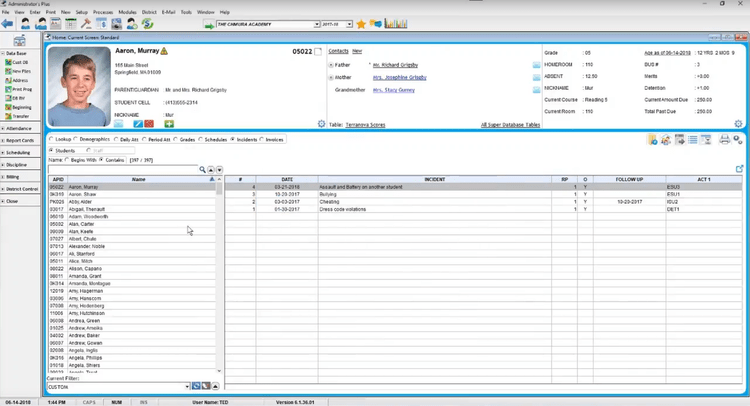
Features of School Management Software
- Student Information : Store all information about a student such as grades, class schedule, a photo, attendance, behavioral issues, medications they’re on, and more.
- Fee Management and Online Payments: Monitor school finances and get insight on deductions, fees, fines, and scholarships awarded to students. Ensure payments are coming in on time prior to deadlines. Manage invoicing for tuition payments.
- Attendance Management: Track daily attendance of individual students and give insight to administrators about the percent of students missing school to monitor trends.
- Gradebook: Input grades for homework, tests, quizzes, and other assignments. Make report cards available online to students and parents via an online parent portal. Calculate GPA totals. Monitor teacher performance to see if student’s are hitting their marks.
- Admissions: Automate the registration process for new and existing students. Filter applications easier and ensure borderline cases get examined in a timely manner.
- Scheduling: Schedule classes for students online so they can know what classes will fit into their day. Schedule the school’s schedules to ensure teachers are not overloaded or that they can meet other obligations. Find ways to add an additional class for a subject if the demand is high enough.
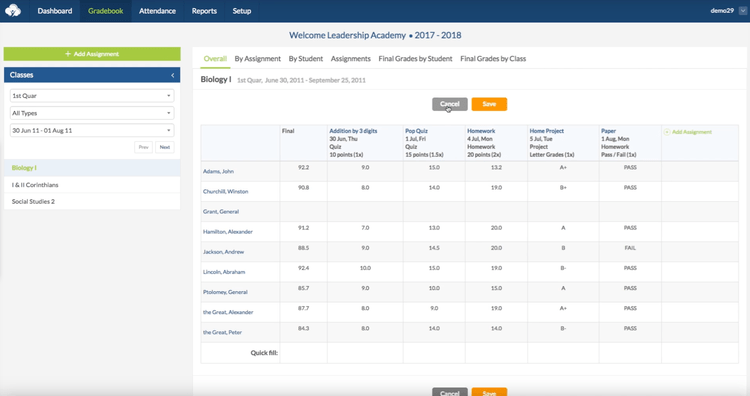
There are a variety of school management software types available depending on your needs. Whether managing student information, administrative staff, or the overall financials of the educational institution, there are a number of solutions to use.
Student Information Systems
Student Information Systems , or SIS, is at the core of a school management system. The data kept in an SIS includes all relevant information on students registered to your college or district , as well as any potential students who are applying. This information includes what courses they are enrolled in, their grades, and their transcripts. It can even include personal information that school officials should know about for emergencies, such as an emergency contact, medications they are on, dietary restrictions, and immunization records.
SIS has strong capabilities to track and report out on student data. It can also simplify state compliance reporting. Many student information systems have pre-built reports for you to showcase attendance, scheduling, demographics, etc. You can even custom create a report if you have a customizable field you’ve been monitoring for the students in your school. Whichever route you take, a qualified SIS as a part of a school management system will ensure you will stay compliant with the state and continue to receive funding.
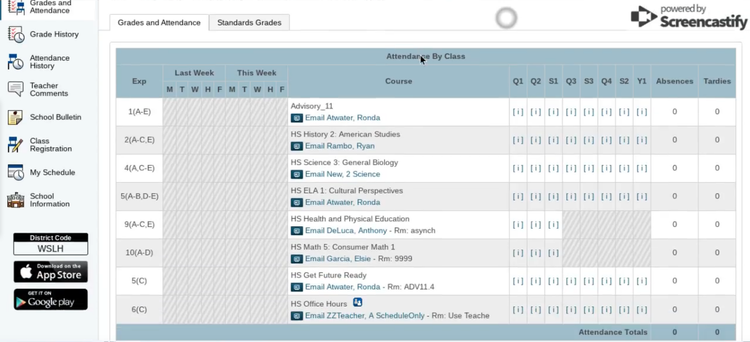
Learning Management System
29.7% of students take at least one online course when enrolled in school, and 14.3% of students are completely online (meaning they do not take any courses in person. Any public institution that provides online classes or lectures will want to have a strong learning management system (LMS) in place, as students will interact with your educational facility completely online.
In an educational setting, a learning management system (LMS) provides the administration, documentation, tracking, reporting, and delivery of educational courses. These types of systems are generally found in higher education, but K-12 online schools are beginning to take shape as well.
Students will look for a capability to browse classes, sign up for classes that fit their criteria, message teachers, take quizzes, submit homework, view grades, and more.
School Administration Software
Examples of functions in school administration systems include:
- Faculty management
- Health records
- Registration
- State compliance management
Administrators need to keep a pulse on the educational organization but don’t have as much of a hands-on approach as teachers in the classroom. Student management software steps in as the helping hand with school administration tools. Now, schools can implement easy-to-use solutions that improve daily operations and increase the productivity of office staff. Becoming a more efficient school will ensure that they can continue to receive any needed funding to operate.
School administration management tools will manage the foundation of your organization. This includes managing all financials involved with running the school on top of staff training and development. It can also include asset management to make sure the buildings, classrooms, computer labs, gym equipment, and more are all cared for or replaced with necessary.
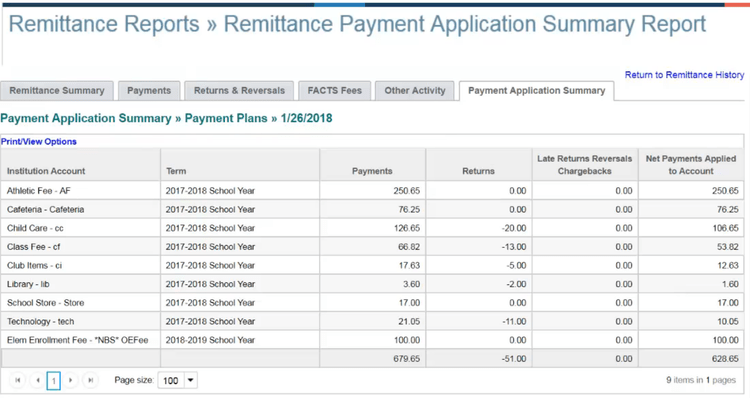
Online School Management Software
Online school management software (sometimes called “cloud-based” or SaaS software) lets you access the solution completely from a web browser. This type of software does not require any sort of native application to be installed on the computer, nor does it require any sort of knowledge in how to properly access the solution. Simply visit the website, log in with your credentials, and you’re up and running.
Online school management systems are easy-to-use compared to a locally installed option. These solutions have the benefit of always being connected to their developers and thus are continuously updated with improvements made due to end-user suggestions. This improves the usability of the software and ensures that complicated processes are fine-tuned so that all levels of your staff can use the software safely.
Mobility is the key benefit of an online solution. Many school districts take advantage of tablets or other mobile devices that run on iOS or Android operating systems. These can give students an easy way to interact with their readings or homework. These devices can access online school management software and gives them a chance to view their grades, work on homework, submit online quizzes, and even view the seating arrangement for the class.
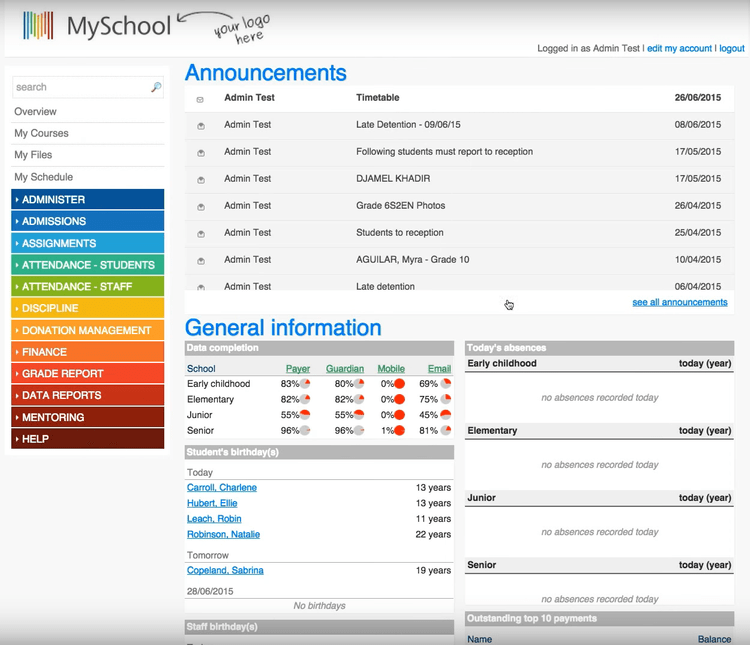
School Management Software for Mac
Most school management systems that will operate on a Mac will be online products intended to be used via a web-browser. This means that the solutions were developed with all users in mind and can be used interchangeably between a Windows or Mac device.
For users looking for a locally installed Mac program, Apple has recently allowed for Microsoft Azure Active Directory support, which provides iPad and Mac users to integrate their favorite tools into their everyday lives. This includes popular programs such as Microsoft Office and Google Drive. It also opens up the door for many Apple computers to potentially run software that may have been developed with a PC user in mind.
Apple also provides Apple School Manager, which is a web-based portal that allows IT administrators the capability to deploy Mac devices in their educational environments using the school’s Microsoft Azure Active Directory credentials. Apple School Manager can also integrate with popular SIS providers, such as Infinite Campus , and PowerSchool .
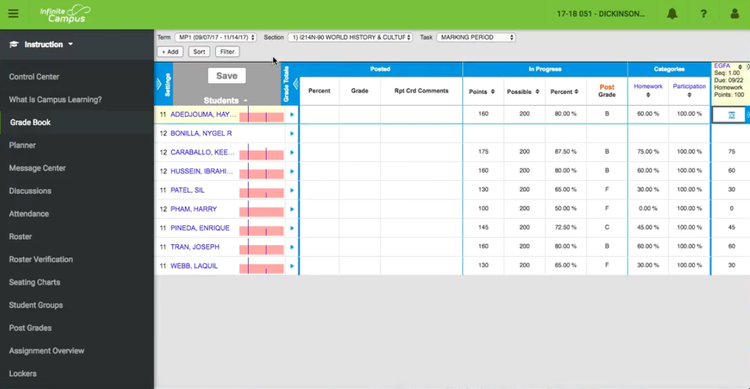

- About ISKLOA
- Contact ISKOLA
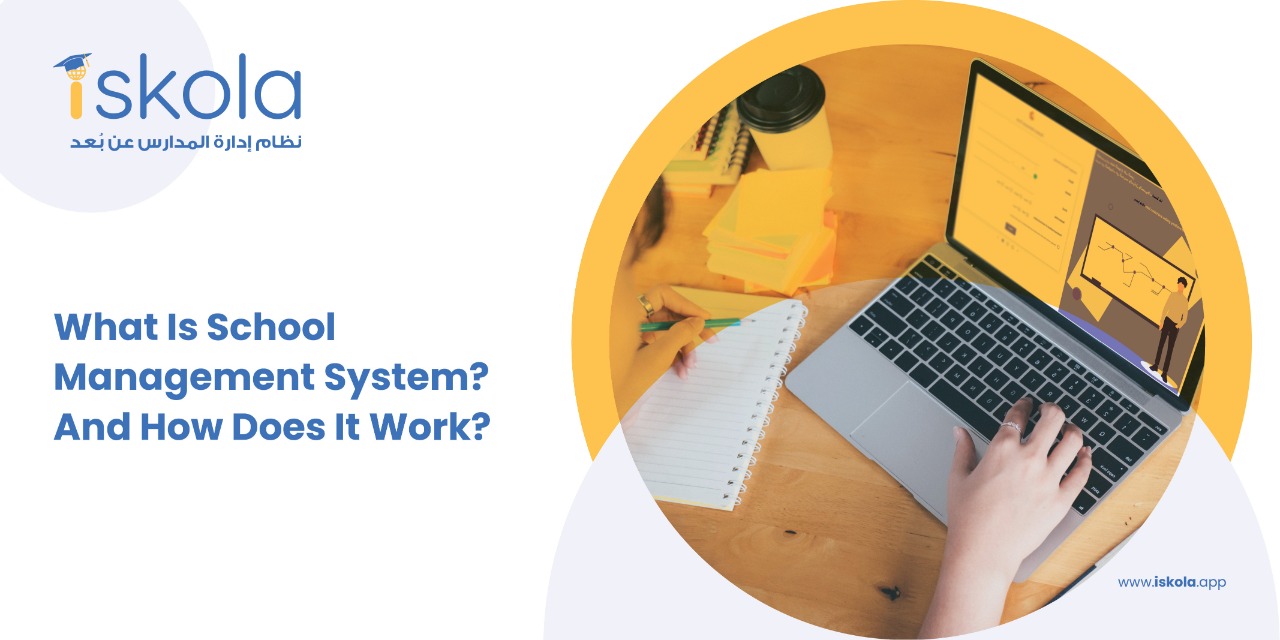
What Is School Management System? And Why Does It So Important?
Schools of all levels and sizes face numerous challenges in organizing communications between administrators, teachers, students, and parents. Student information, payments, and other administrative tasks can be overwhelming, especially at medium and large educational institutions. School management systems can automate these tasks and reduce administrative and personnel requirements.
But what is a school management system? Why does it so important? And how can schools in the Arab region benefit from and implement it?
This is what we will learn in today’s article, so keep reading on…
What Is School Management System?
A school management system is an information management system for educational institutions to manage student data. It helps teachers get information about students faster, easier and reduces their workload.
Student databases in school management systems contain information about the students, such as their exam grades, parent information, medical history, tuition fees, etc.
School management systems provide skills such as student registration, class documents, grades, analytical grades for students, and other assessment elements. In addition, school management systems are used to plan the curriculum of students, record their presence and manage the needs of students in the school.
School management solutions are web and mobile-based applications with centralized data storage structures that make it easier for administrators, students, teachers, and parents to access data from iPhone and Android devices.
After answering the question of “what is a school management system?”, let’s move directly to the importance and ask the following question:
Why Do the Schools Need School Management System?
1. building a giant database for your school.
School management software can host modules that allow users to maintain academic histories and student records. All information about the students can be accessed via the school administration system.
School management systems contain a lot of information about students like their exam grades, parent information, medical history, school fees details, etc. And this helps teachers to obtain information about students faster, and easier, and to reduce their workload.
2. Facilitating the Educational Process Management
School management systems facilitate the different educational processes such as student registration, class documents, grades, analytical grades for students, and other assessment elements.
In addition, school management systems can be used to plan students’ curriculum, record their attendance and manage student-related needs within the school.
Moreover, school management systems vary in size, scope, and ability to be packaged and implemented by small organizations that cover student data and enterprise solutions that aim to cover most aspects of the operation of large organizations and their online schools with significant local responsibilities.
School management systems reduce administrators, teachers, employees, and others’ activities by providing them with a platform to monitor activities, create reports, and upload documents, and more.
3. Maintaining School Resources
The traditional means of resource management leads to wasteful budget allocation, overburdens the operation of school facilities, and fewer responsibilities are mitigated by school management systems because they connect students to school facilities, and vice versa.
Moreover, school management software provides a platform that allows parents to make fee payments. That’s a convenient way for parents to avoid late fee problems, as the software can send SMS updates when not paid fees.
4. Building Powerful and Central Communication
Teachers, staff, and other external actors can work together on a central platform. When the administration wants to send urgent messages to parents, or when parents need to make complaints about communication between students and teachers, a school administration system is an internal communication platform that connects one party to another.
Also, implementing a school management system helps parents to be active participants in the educational cycle of pupils. It informs parents about their children’s intellectual development and academic performance; this is an essential reinforcement to motivate students to perform.
Also, School documents and scheduling are handled via cloud access. Headteachers have access to a specific timetable and daily reports from all teachers.
What Are the Main Uses of the School Management System?
There are various software tools you can use to automate your organization to achieve your goals and take advantage of digitalization in operation, and school management software is an integral part of every school or college.
The school management software consists of several modules that manage the entire school life cycle that includes:
- Student enrollment.
- Timetables.
- class books.
- School activities.
- Fees collection.
- Students reports.
- Transportation.
- Libraries, etc.
School management systems vary in size, scope, and ability; from small organizations that entail student records to enterprise solutions that aim to cover most aspects of the operation of large organizations and their online schools with local responsibilities.
What Are School Management System Top Features?
Online school management software is a helpful tool for non-educational staff also has features and benefits for those involved in the teaching side.
Ease of Use
In general, an online school management system should provide an easy-to-use interface and a robust system that meets the challenges of the education system and flexibility to adapt to changing needsز
Thus, allowing users to add, modify and view all aspects of the system to facilitate registration, identification of student background, and entrance examinations.
The school management system helps schools to keep information about different departments of the school in one place. It allows authorized users to search for information about students and school materials. And this helps to manage data relating to employees in educational institutions, whether it is a school or university.
Open-source Software
The School Management System is an open-source software application that simplifies the various school administrations and colleges and brings together administrators, teachers, students, and parents.
It is a web-based application for the effective and efficient administration of a school or university. The school management system helps manage admissions, timetables, fees, attendance, and evaluation of school staff and students.
Suits Both Students and Teachers
Effective school management software not only helps to obtain information about students but also provides information about the activities of teachers in the school. The reach of a school management dashboard can range from narrow and easy for users and administrators to broad and encompass all aspects of student and teacher data management, including health exams and screening.
It is easy to view a specific teacher timetable and create reports. Teachers can use their database to store details of lesson times, learning progress, and class activities in one place. In the classroom, teachers can be present, do classwork, write grades, and communicate with students’ families.
In conclusion, we can say that “iSkola” can offer you all that and much more. Start implementing “iSkola” School management software that helps you:
- Digitize all your school processes and improves the productivity and efficiency of the school as a whole.
- Reduce the functionality of administrators, teachers, employees, and others by providing them a platform to monitor activities, create reports, upload documents and, more.
- Provide regular updates to students and parents through their software and notification system.
To learn more about iSkola, check: iSkola: An Integrated School Management System for Arab Schools
Contact us now for more information or to reserve your own copy of your online school.
Contact us today
Share This Story, Choose Your Platform!
WhatsApp us
Top 7 Top Rated School Administration Software
Ashish Upadhyay
School management software helps manage administrative tasks and learning activities..
For school staff and administrators, managing day-to-day operations can be exhausting. Recording student information and attendance, tracking grades, scheduling classes, and planning activities require both manual effort and staff resources, and the need to communicate information to parents makes the process even more complicated.
School management software simplifies this process by providing a centralized dashboard to store and manage student information; track attendance and performance; automate class scheduling; and facilitate communication between teachers, parents, and school administration.
This article highlights, in alphabetical order, the top seven school management software based on verified software reviews. Read more .
Check out the complete list of school management tools in Capterra's software directory.
1. Alma SIS: Sends alerts during emergencies
Alma SIS is a student information system designed for K-12 institutes. It offers a centralized dashboard that you can use to generate reports showcasing students’ grades, attendance, and behavioral incidents, among other data.
The software allows your faculty to distribute assignments to students and evaluate their submissions online. They can also create competency-based assignments to ensure personalized learning for students.
Emergency and system-wide communication: Sends real-time email and SMS alerts to students and staff in case of emergencies or natural disasters.
Gradebook management : Maintains a personalized grade book to record student grades, assessments, achievements, and overall progress.
Virtual file cabinet : Stores student records digitally and offers role-based access for your staff members.
Customer support options : Chat, email, and phone

Trial/Free Version
- Free Version
Starting price
Device compatibility, screenshots.

Dashboard in Alma SIS ( Source )
2. brightwheel: Provides attendance-based billing
brightwheel is a school administration software solution built for daycare centers and educational institutes. It helps automate day-to-day operations such as attendance tracking, communication with parents, and staff management.
With the software, you can manage the admission process for new students and set up automated billing to collect tuition fees and additional charges for extracurricular activities. Your teaching staff can create digital lesson plans for their classes and generate student activity reports to share with parents.
Attendance-based billing : Tracks student attendance and applies an hourly tuition rate to calculate the total fee.
Staff messaging : Sends messages to staff members to share daily updates or notify them of changes in the administrative process.
Learning and assessment: Records student progress and shares the results with faculty and parents.
Customer support options : Chat, email, and phone

brightwheel
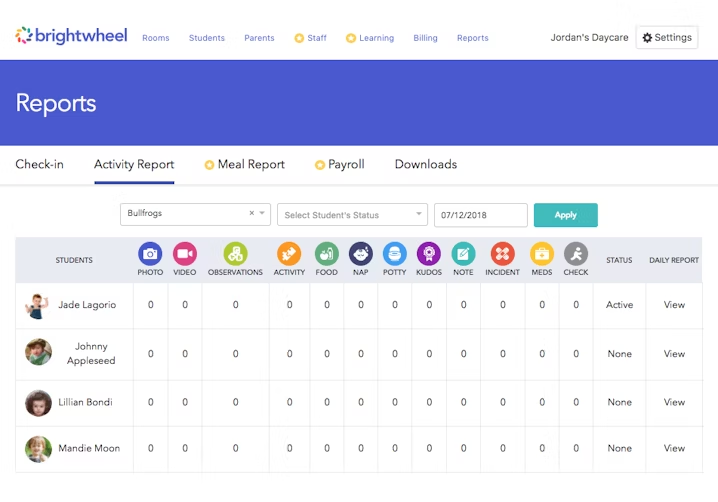
Student activity report in brightwheel ( Source )
3. Gradelink: Offers built-in chat for parents and staff
Gradelink is a student information system that helps school administrators manage student data; communicate with students, parents, and staff; and track student performance via reports. It allows your school staff to input student grades, attendance, and discipline information.
The software offers a dedicated portal for parents and students to access homework assignments, attendance reports, assessments, and grades. It also has a built-in live chat function that lets your educational institution communicate with parents in real time, reducing the need for phone calls and emails.
Family directory : Maintains a record of student information, including addresses and contact numbers of family members.
Teacher schedules : Provides visibility into your staff's weekly schedule and lets you reschedule classes to prevent overlaps or clashes.
Volunteer and service hour reporting : Allows parents and students to submit volunteer or community service hours in the system and tracks the total hours submitted.

Maintaining student records in Gradelink ( Source )
4. iGradePlus: Provides a web portal for students and teachers
IGradePlus is a grading and assessment platform designed to help educators digitize their grading process. It offers a web portal where teachers can enter assessment feedback and students can check the feedback and grades.
The software lets your faculty create interactive quizzes and puzzles to support students’ learning needs. It also lets them prepare and send homework assignments online and set deadlines for submissions.
School year calendar : Offers a school year calendar that you can share with staff and students. The calendar provides dates for grading periods, off days, and scheduled events, among others.
Parent profiles : Creates dedicated profiles for parents and allows them to access their child’s grade cards and performance reports.
Video meetings : Facilitates online video meetings between staff and parents to discuss student performance.

Assignment scoring in iGradePlus ( Source )
5. ParentLocker: Lets your staff create photo albums
ParentLocker is a school management system that helps track students' academic activities, assignments, and attendance. It allows your staff to send email and SMS notifications to parents to inform them about school events, their child’s health, etc.
The software features a built-in database to store student information such as their grades, admission year, date of birth, address, and parent’s contact number. You can apply filters such as grade level, class, and graduation year to search and retrieve information about any student. You can also create customizable report cards to share with parents via email.
Online grade book : Maintains an online grade book to record a student’s overall progress.
Photo albums : Makes photo albums to store images from school events and share them with parents via email.
Class schedules : Creates printable class schedules that your staff can customize and share with students.
Customer support options :Chat, email, and phone
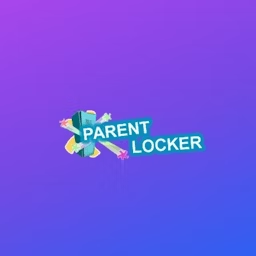
ParentLocker
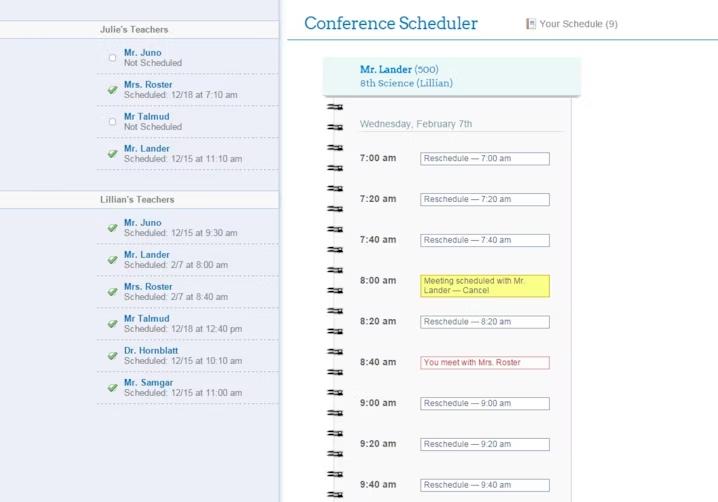
Conference scheduler in ParentLocker ( Source )
6. Pikmykid: Offers a silent alarm to report emergencies
Pikmykid is a school safety and dismissal management platform for parents and educational institutes. It helps schedule transportation for students and notifies parents via SMS once the vehicles leave school premises.
The software has a dedicated mobile app that sends real-time alerts to staff members and parents in case of emergencies such as natural disasters, intruders on the campus, or inclement weather. It also offers location services to help school personnel instantly know the location of any reported incident.
Dispersal plans: Creates clear dispersal instructions for students and staff to follow when entering or leaving school premises.
Parent engagement : Allows parents to make pickup, delegation, and attendance changes through a mobile app. They can also choose who has pickup permissions.
Silent alarm : Uses a silent panic button to alert respondents about an incident without sounding loud alarms or creating dangerous panic.

Dashboard in Pikmykid ( Source )
7. Sawyer: Automates tuition payments
Sawyer is a school administration platform that centralizes communication between teachers, students, and parents. It helps automate processes such as student record-keeping, attendance tracking, and grade management.
The software lets you create reports showcasing student activity and engagement levels. It also allows you to schedule activities and classes for multiple batches and send out reminders to parents for upcoming events.
Payment processing : Provides multiple payment options and allows parents to pay for individual classes or whole semesters.
Bookings and registrations: Offers a dedicated portal for parents to register their children for individual classes and courses.
Marketplace : Builds listings for activities and events that your educational institute offers and enables parents to book classes.
Customer support options: Chat, email, and phone

Calendar management in Sawyer ( Source )
How to choose the best school management software
Consider these factors to ensure you select the best school management system for your educational institute:
Look for automated attendance management. This feature will save you from the hassle of manually checking and marking the attendance of each student. It’ll also save time and effort for your faculty members, prevent manual data entry errors, and significantly reduce attendance-related paperwork.
Check whether the software facilitates communication between parents and teachers . Look for software that offers communication channels such as chat, email, SMS, and video conferencing to allow teachers and parents to discuss their child’s performance, interests, involvement in school activities, etc.
Assess the student enrollment and admission functionality. The school management software you pick should have a centralized dashboard to help manage enrollments, collect admission fees, and validate student documents.
How much does school management software cost?
Pricing for school management software products is usually available on quote. You can inquire about individual product prices from vendors.
Hidden costs associated with school management software
Check for these hidden costs when buying school management software:
Additional user costs : Some vendors charge an extra fee for additional user seats.
Payment processing fee : Some vendors charge an additional processing fee for each payment you process through their application.
Common questions to ask when buying school management software
Here are some questions to ask vendors when buying school administration software for your educational institution:
Does your software track school finances?
Financial management features will help you keep track of school finances, such as fee management, budgeting for school events, and general expenses for upkeep.
Does your software include library management?
School administration software with built-in library management will allow you to maintain a database of books, monitor circulation, record borrower details, track due dates, and manage late fees.
How does your software protect student information?
School management software with data security features such as encryption, authentication, and tokenization will help you protect sensitive student data. Also, look for an administrative dashboard that lets you define who has how much access to school and student records.
Methodology
To be considered for this list, products had to:
Have the highest ratings in Capterra Shortlist report for school management software . We selected the top seven products to feature in this article.
Include class scheduling, student information/records, attendance tracking, and faculty/staff management as core features along with student data analytics, course management, and faculty/student locator.
Meet our school management software market definition: “School administration software helps principals or school administrators track every aspect of their school, from staff activities to report cards to student data.”
The “ best functionality ” tool is identified based on the highest user ratings for functionality that a vendor receives based on user reviews, as of Feb. 9, 2023.
Note: Products evaluated for the pricing calculation were taken from Capterra’s school management software directory .
Was this article helpful?
About the author.
Ashish Upadhyay is a content writer at Capterra, helping small businesses identify the right software for their business needs by analyzing user reviews data for the highest rated products in relevant software categories. Prior to joining Capterra, he worked in insurtech, fintech, and real estate. Specializing in marketing, project, and IT management, Ashish’s works have been featured in MAST magazine and Medium. In his free time, he enjoys working out and playing video games.
Related Reading
7 top-rated ai coaching tools, 5 key learning management software features and top products that offer them, agile learning: a comprehensive guide, 3 holistic learning and development techniques for adults, capterra value report: a price comparison guide for lms software, 5 top-rated web conferencing software for education, 5 top-rated document management software for educational institutes, 5 top-rated learning management systems for small businesses, 5 top-rated project management software for education management.
School Management Software
Find the best School Management Software
Popular comparisons.
- FrontRunners
Buyers Guide
Filter products, company size.
- Self-Employed
Pricing Options
- # of User Reviews
- Average Rating
- Alphabetically (A-Z)
- Frontrunners
Compare Products
Showing 1 - 20 of 245 products

Procare Solutions
Procare Solutions is the #1 child care management software – modern, best supported, feature-rich solution for child care centers. For over 30 years, Procare has been the most trusted name in child care business management softwar... Read more about Procare Solutions
4.6 ( 2099 reviews )

PraxiSchool
PraxiSchool is your complete solution for School Management Software! Enjoy an easy tool for attendance, grades, daycare, lunch, accounting, donors, time clock, texting and much more! Our online registration feeds data directly to... Read more about PraxiSchool
4.6 ( 41 reviews )

FrontRunners 2024
Gradelink is an internet-based school management solution that connects teachers, students, and parents through a single, easy-to-use platform. Schools worldwide use it to save time managing student enrollment, reporting attendanc... Read more about Gradelink
4.7 ( 604 reviews )
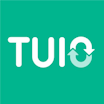
TUIO is the top-rated School Management System that centralizes all enrollment, waitlisting, reporting, billing and payments in one online portal to help you save more time and streamline your processes. With our new free version,... Read more about TUIO
4.6 ( 177 reviews )

DreamClass is a school and classroom management solution designed to help educational institutions, such as schools, colleges, dance studios, language academies and more, manage operations. The platform, which is deployed within t... Read more about DreamClass
4.8 ( 47 reviews )

Administrator's Plus
AdminPlus by Rediker is a cloud-based student information solution that helps schools collect, manage and analyze student information. The solution caters to public and private schools of all sizes and grade levels. The solution'... Read more about Administrator's Plus
4.1 ( 71 reviews )

PowerVista RollCall
PowerVista RollCall is an on-premise and cloud-based campus management and student administration solution designed for non-K-12 schools. This solution caters to schools for adult students and student lifecycle management capabili... Read more about PowerVista RollCall
4.5 ( 13 reviews )

Sawyer is a cloud-based camp and activity management solution that offers booking and scheduling services for children's after school class providers, camps and events. The solution also offers an online marketplace, where parents... Read more about Sawyer
4.5 ( 302 reviews )

Campus Cafe
Campus Cafe is a cloud-based student information system that helps in managing admissions, student services, business office and alumni development functions. Primary features are inquiries tracking, applicant tracking, status tra... Read more about Campus Cafe
4.7 ( 19 reviews )

Blackbaud K-12 Solutions
Blackbaud K-12 is a cloud-based school management solution designed to help educational institutes record and track students’ information, grade and health records. It offers an online attendance tracking system, which enables stu... Read more about Blackbaud K-12 Solutions
4.1 ( 12 reviews )

USA Scheduler
USA Scheduler is a cloud-based scheduling tool that helps educational institutions create and manage schedules for teachers and students on a centralized platform. Professionals can assign instructors to specific courses, manage s... Read more about USA Scheduler
5.0 ( 39 reviews )

Alma’s future-ready, cloud-native student information system tools optimize K-12 school operations, empowering educators to improve family engagement and student outcomes. From daily processes to community-wide communication and... Read more about Alma SIS
4.3 ( 296 reviews )
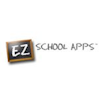
EZ School Apps
The EZ School Lunch Software, starts at $695 per school location per year, offers an easy-to-use, completely online school lunch and cafeteria software. It includes a full POS system, free & reduced lunch tracking, lunch pre-order... Read more about EZ School Apps
4.7 ( 7 reviews )

The Alpha School System creates and maintains the TASS.web suite of software solutions for K-12 schools. This suite includes a web-based platform that integrates Financial, Student, and Payroll Administration, as well as portal so... Read more about TASS
5.0 ( 1 reviews )

iCherub is a childcare management software to manage and transform child care centers. iCherub is not just record keeping software. iCherub enables users to view 360-degree view of their data, Improve communication, gain actionabl... Read more about iCherub
No reviews yet


Surfside Lighthouse
Lighthouse is a cloud-based student information solution (SIS) from Surfside Software that can be installed on all school PCs or only on specific terminals. It offers tools to track student performance, mark grades and attendance,... Read more about Surfside Lighthouse

Skyward Student Management Suite
Skyward’s Student Management Suite is a cloud-based student information system that helps schools manage student records, curriculum, attendance, grades, discipline, reporting, and more. The gradebook module supports standards-ba... Read more about Skyward Student Management Suite
4.3 ( 148 reviews )

Fedena is a cloud-based school management solution from Foradian Technologies, featuring multiple modules for managing student data, schedules, grades, messaging, human resources, finances, and more. The solution’s dashboard can ... Read more about Fedena
4.2 ( 19 reviews )

mySkoolApp from Hex Technologies is a cloud-based and on-premise school management solution built to manage student data, daily operations and communications. The solution helps teachers, students, administrators and parents acces... Read more about mySkoolApp
4.6 ( 14 reviews )

School ERP by Sharad Technologies
School ERP offers cloud-based school management software suitable for educational institutions of all sizes. Key features include a radio frequency identification (RFID) attendance system, attendance and performance reporting, GPS... Read more about School ERP by Sharad Technologies

brightwheel

What is school management software?
School management software is a tool that helps educational institutions efficiently manage their administrative tasks and day-to-day activities, including attendance tracking, grading systems, scheduling classes and exams, facilitating student-teacher communication, and monitoring students' progress.
The school administration management system offers features to guide the admission processing and fee collection. Parent portals in the system allow guardians to access their child's academic performance, including grades, assessments, behavior and conduct, and a report of overall growth. With school management software, educational institutions can significantly reduce paperwork, saving time and effort to enhance school operations.
What are the core features of school management software?
Class scheduling: Facilitate the creation, modification, and visualization of timetables for classes. The feature allows admins to efficiently allocate rooms or resources based on specific requirements such as class size or subject matter. It ensures smooth operations by avoiding scheduling conflicts, including overlapping sessions or double-booked classrooms.
Student information/records: Maintain and manage student data including attendance, grades, behavior reports, and health records. The student information system provides centralized access to student data for administrative decision-making or parent-teacher communication purposes. It ensures the confidentiality of sensitive details about student progress reports and overall well-being.
Faculty/staff management: Manage faculty and staff details with each member's qualifications, certifications, contact information, schedules, and payslips. The feature assists in scheduling classes or duties effectively while tracking attendance and performance metrics regularly to ensure adherence to educational regulations.
What are the benefits of using school management software?
Enhances parent-teacher communication: School administration management software provides a centralized platform where teachers can share updates, grades, and important notifications. Parents have immediate access to this information, which eliminates the need for physical meetings or phone calls. This promotes transparency, improves understanding of student performance, and fosters greater parental involvement in their child's education.
Automates scheduling and timetabling: The tool assigns classes, manages schedule changes, and automatically allocates teachers according to availability. It also helps handle timetable clashes. This significantly reduces administrative workloads while ensuring efficient use of resources and smooth operations within educational institutions.
Facilitates student data management: School management system software simplifies student data management by centralizing all information in one place. It keeps track of students' enrollment, grades, attendance, and other essential details, making it easy to access and update. This avoids manual errors associated with paper-based systems or multiple databases, enhancing the efficiency of administrative tasks related to student management.
What are the potential issues with school management software?
Data privacy issues: School management software handles sensitive student information, grades, and financial records. Data privacy issues can arise if the system lacks robust security measures or fails to comply with regulations such as GDPR (General Data Protection Regulation). If the system lacks robust security measures, it can lead to unauthorized access or breaches, risking exposure of confidential details, which can have severe legal and ethical implications for schools.
Inadequate reporting tools: Inadequate reporting tools in school management software can result in a lack of valuable insights into student performance, staff efficiency, resource allocation, and other school operations. This can hinder strategic planning and decision-making processes within educational institutions. Accurate data analysis is crucial for continuous improvement, as it might directly impact the quality of education provided by the institution.
Integration issues: Poor integration capabilities in school management software can cause difficulties by limiting data flow between systems such as grading, scheduling, or communication. If the software cannot integrate with other platforms used in a school setting, it may imply additional manual work for staff members. This could slow administrative tasks and disrupt smooth operations within an educational institution.
How much does school management software cost?
Most school management software products are priced on “per month” basis, and their entry-level pricing plan ranges from $39 to $199+* . An enterprise product priced higher may include additional features such as private lessons, business intelligence and analytics, course bundles, gamification, and an integrated website.
*The pricing included is for the entry-level/lowest-priced offerings found on vendor websites as of Feb. 12, 2024.
What is school management software used for?
A school management system centralizes all student information for transparency in communication between teachers and parents on the child’s academic progress. However, the software can have multiple use cases based on the data fed into the system and the tool's features leveraged. Some of them are:
Student attendance monitoring: School management software offer a centralized platform for tracking student attendance. Teachers can mark student attendance electronically through fingerprint or facial recognition scans, QR codes, or a mobile app. This school software feature maintains accurate records of student engagement and participation throughout the school day. It also frees up valuable instructional time that teachers can spend on classroom management and student interactions.
Parent-teacher interaction: The tool allows parents to stay informed about their child's academic performance, schedule, and activities, saving time, reducing errors, and enhancing relationships. In addition, it aids in administrative tasks such as tuition payment reminders and group messaging, improving overall communication within the school community.
Financial management: A school management system handles all the financial transactions within a school, including fee collection, expense tracking, income statements, and financial reporting. This assists in budgeting and forecasting revenues for better resource allocation. Parents can see payment history or pending dues through the self-service portals, enhancing transparency in communication and avoiding late fee payments.
Which software tools integrate with school management software?
A school management tool integrates with various solutions for data export and import. We looked across thousands of reviews from the software users to identify the products that the users frequently mentioned they integrated with their tools:
Google Classroom virtual classroom software integrates with a school management system to manage both in-person and virtual classes within the same systems, promoting efficiency and reducing the need to switch between applications. Teachers can leverage interactive features, such as polls, breakout sessions, and whiteboards to foster collaboration and active student engagement.
Stripe is a payment processing software that integrates with school management software to eliminate the need for manually managing paper cheques and cash, saving administrative time and resources. Parents can make online payments through the preferred payment modes and generate invoices for future reference. The integrated system allows tracking of individual student accounts, payment history, and outstanding balances.
Tuition Express daycare software integrates with a school management tool to access a single platform for both daycare and school updates, simplifying communication. Teachers and parents can track student development across daycare and school environments, providing a holistic view of their growth. The integrated systems facilitate the sharing of student information, such as emergency contacts, medical history, allergies, and dietary restrictions.
Google Docs, a document management software , integrates with a school management tool to store, access, share, and manage all school documents, such as student records, transcripts, staff contracts, and financial information, in one centralized location. The integrated systems automate document processing such as student enrollment, permission slips, and leave requests to minimize manual tasks and improve turnaround times.
Google Calendar scheduling software integration with school management software allows accessing complete school schedules, including classes, meetings, events, and staff assignments. The integration allows for generating reports and analyzing scheduling data to identify trends, optimize resource allocation, and inform future scheduling decisions.
We identified these integrations mentioned most often in verified reviews of school management software published on Software Advice within the past two years. (as of Feb. 12, 2024).
Key considerations when purchasing school management software
Consider the software's grading and attendance tracking system. Grading and attendance tracking are vital components of school management software. These features simplify teachers' administrative tasks by automating them and providing a centralized system for recording student performance and class presence. This data aids in monitoring academic progress and detecting absentee trends early on, improving overall educational outcomes.
Check the communication features for parents and teachers. Communication features of school management software facilitate efficient and timely interaction between parents and teachers. This enhances transparency, allowing parents to track their child's progress, attendance, or issues in real time while improving parent-teacher relationships that positively impact student performance.
Examine options to customize user permissions. Customizing user permissions in school management software keeps sensitive data accessible to authorized individuals only. This role-based access control system helps maintain the confidentiality of student and staff information, enhancing operational efficiency while ensuring security compliance.
Products evaluated for the pricing calculation were taken from Software Advice’s school management software directory. The pricing ranges exclude freemium versions of the products. The features highlighted were identified based on their relevance and the percentage of products in Software Advice's directory that offer them.
This school management software buyers guide was authored by Software Advice’s content team. We develop our guides using the author's expertise, insights from 2M+ unique user reviews, and our proprietary data science algorithms to identify trends in user sentiment, preferences, and priorities. Some text was generated with assistance from artificial intelligence tools.

Meet Us at Dubai World Trade Center | October 16 - 20
Meet Us There October 16 - 20
Schedule a Call

Let's Collaborate
Tell us your ideas to get started
What is a school management system? Why Institutes need it?
School Management Systems Plays an essential role in the current educational system. School authorities all over the world are engaged in a lot of day-to-day administrative and academic activities to manage and provide a better academic experience to students effectively. However, maintaining and keeping track of school administrative activities is not an easy process in the fast-growing world. It requires hard work and often it is time-consuming.
To better perform the school administrative activities of educational institute and to assure parents the real-time progress and security of their children, educational institutes utilizes School Management software nowadays. Such applications often offer many features that help to enhance the performance of schools with minimum efforts. School Management software does it by avoiding the manual paper works and automation of many academic and administrative activities. Now let us take a look at why institutes need to implement it.
Table of Contents
Student Information
Attendance, homework, discipline, grades and achievements! Every information that is related to students can be easily accessed using a school management system. It helps teachers to quickly obtain information about students fast and easy reducing their workload. The student database in a school management system contains much information about students such as their Examination grades, Parental information, Medical history, details related to school fee, etc. Many School management system offers real-time information and announcements through SMS as well.
Parent Access
Parents play a crucial part in the child’s education. They are continuously involved in it. And it is necessary to keep them updated and notified about the progress of their child. Previously schools had to conduct parents meetings to keep update parents about the academic performance of their children. Parent meetings were time-consuming and many parents faced trouble attending meetings because of their work schedule, family issues, etc. With the introduction of School ERP software, parent notification becomes simple and straightforward. School ERP systems can notify parents about their children through mobile apps and SMS services etc. This way they are notified instantly, and it helps to keep updated about their child’s academic performance in real-time.
7 Security issues developer encounter while developing mobile apps
Teacher Information
A school management system not only gives information about students. It can provide real-time information about teachers activities also. School administrators can access a particular teachers class schedule, daily reports of the teacher, etc. With the Help of artificial intelligence school management systems can even monitor the performance of teachers and give real-time suggestions to improve the teaching quality. It also provides a dedicated portal for teachers making it easier for them to find all the information related to students and school activities.
SMS and Real-time app notifications
The communication between teachers and parents is an essential factor in a student’s academic success. Introduction of school management systems ensured the real-time interaction between teachers and students through SMS messages and live chats. Every school management system has a dedicated parents portal. Parents can use the portal to communicate with teachers and school authorities through text messaging, voice chats or emails. Notification regarding important school announcements like teacher’s day, annual day, the cultural day also can be notified to everyone using bulk SMS/chats. This will save the time of school administrators for making individual calls to every parent.
Attendance Management
An attendance management system is an essential feature of school ERP software. The attendance management system offered in school ERP systems replaces the old and time-consuming paper-based attendance systems. By using RFID school management systems, taking attendance became faster and more comfortable. Such attendance management systems ensure foolproof attendance records and eliminate the possibility of proxy attendance.
Report Cards
Report cards represent the hard work of a student. The paper-based report cards may take hours to prepare for each student. A school management system help streamline the process of generation of reports cards with an interactive GUI. With the already available information on students performance and grade in the database, the report card may take only a few seconds to generate. Teachers can review and edit the information at any time if needed before printing the report cards.
Fee Management and Online Payment
Collecting the fee from students is always a hectic process. School management systems make it possible for parents to pay their child’s school fee online using their debit/credit cards. The software can generate receipts for all the incoming payments within no time. This makes the entire school fee payment method so convenient and easy.
Many school management systems also offer more features like library management system, examination management system, admission management, etc. Automation of these process makes the school administration effortless thereby ensuring the smooth functioning of the school.
Hope you enjoyed reading the article. Have a Good day!
- Artificial Intelligence 2
- Classified App 1
- Digital Transformation 7
- Doctor Appointment Booking App 5
- Ecommerce Apps 13
- Education Apps 2
- Fintech-Apps 25
- Flutter Apps 18
- Food Delivery App 4
- Grocery Apps 2
- Health Care 2
- Loyalty Programs 8
- Mobile App Maintenance 1
- Mobile Apps 113
- Product Engineering 2
- Progressive Web Apps 1
- Saas Application 1
- Taxi Booking Apps 7
- Truck Booking App 4
- UI UX Design 8
The degree of outcome rendered by Mindster for our iPhone & Android e-Wallet mobile app is commendable. It is great to work with an organization that responds to the customer needs on time. Mindster has been great throughout the project and their guidance and suggestions have been invaluable. We are extremely pleased with our application.

Subscribe To Our Newsletter
Check our free newsletter about mobile app development, latest technology updates, fintech, loyalty and more.
Leave a Reply Cancel reply
Your email address will not be published. Required fields are marked *
Save my name, email, and website in this browser for the next time I comment.
Related Blogs and Topics
Have queries talk to us and get your idea moving, sales enquiries.
Asha : +91 9526015617 Sameer : +91 9567555110
partner enquiries
Let’s help develop your apps
GET A QUICK QUOTE
We value your privacy
We use cookies to enhance your browsing experience, serve personalized ads or content, and analyze our traffic. By clicking "Accept", you consent to our use of cookies.
- [email protected]
- +91 9526015617
For Careers
- +91 8590200300

- Mobile App Development
- Flutter App Development
- UI UX Design
- Fintech App Development
- Loyalty Software
quick links
- Product Engineering
- Mobile App Maintenance
- E-commerce App
- Grocery Delivery App
- Taxi Dispatch App
- Doctor Appointment App
- Classifieds App
© 2024. Mindster. All Rights Reserved

Disclaimer /
Privacy Policy /
Terms & Conditions /
Refund Policy
The Ultimate School Management Solution
Ensuring excellence and compliance in your educational environment.
Our all-in-one, cloud-based system simplifies every academic and administrative task, creating a smooth and unified experience for students, teachers, and parents alike. Discover why we're the best rated School Management Software.
Get a Personalized 1:1 Demo
Find out why 90% of our users say that classter has improved the way they work for better., educational institutions, daily active users, of teamwork trimmed per week, unifying education: classter school management.

All-Inclusive Admissions
Simplify admissions with Classter, uniting all applicant data in one place. Streamline the journey from first contact to enrollment, making it smoother for applicants and administrators alike.
Holistic Student Profiles
Create comprehensive student profiles that compile academic, financial, and personal data. Classter keeps everyone informed and engaged, from teachers and parents to the students themselves.
Unified Academic Management
Manage curriculums, timetables, and assignments effortlessly. Classter brings together all academic elements, ensuring a cohesive and well-organized educational journey for each student.
Centralized Financial Tracking
Keep all financial interactions transparent and traceable. Classter consolidates billing, payments, and budgeting, providing a clear financial picture for students and the institution.
Engaged Community Communication
Foster a vibrant educational community with Classter’s communication tools. Connect students, parents, and staff in meaningful dialogue, supporting a collaborative and inclusive environment.
Alumni Networks and Beyond
Maintain strong relationships with graduates through Classter’s alumni management. Keep alumni engaged and involved, continuing the relationship well beyond graduation and nurturing a lasting community.

Find out why organisations like yours are using Classter to boost their efficiency by up to 50%

Simplify Your IT Infrastructure
Say goodbye to fragmented it infrastructure and hello to the simplicity of a fully integrated solution. classter is a modular solution that combines the functionality of five different systems into one platform that provides unified experience..
Simplify your school's billing and payment processes and enhance financial management with Classter's Billing & Payments module - try it now!
Streamline your school's internship and thesis management and enhance student career development with Classter's Internship & Thesis module - try it now!

For Organizations of all Sizes and Types
Customize classter to fit your needs. create a personalized system just for you., school districts.

Streamline the complex tasks of your school district and enhance the educational experience of your students and staff with Classter’s powerful and flexible management system.
SEMINARY EDUCATION
Optimize the performance of your seminary education institution and provide an exceptional learning experience with Classter’s innovative and comprehensive management system, featuring advanced tools for academic and financial management, communication, and more.
CORPORATE LEARNING
Revolutionize your corporate learning programs with Classter’s innovative and comprehensive management system, designed to streamline administrative tasks and enhance employee engagement and training.
ACADEMY & TRAINING CENTRES
Maximize the efficiency of your academy or training centre and provide an exceptional learning experience with Classter’s end-to-end management system, featuring advanced tools for course management, communication, and billing.
K12 SCHOOLS
Transform your K-12 institution with Classter’s complete school management system – streamline complex tasks, enhance communication and collaboration, and provide an exceptional learning experience for students and staff.
HIGHER EDUCATION
Elevate your higher education institution with Classter’s comprehensive and customizable management system, designed to streamline complex administrative tasks and enhance the student experience.
ACADEMY & TRAINING CENTERS

Classter is the SIS of choice for Higher Education, due to its fully configurable, modular, cloud-based architecture. Classter team worked with UCreativa, a leading institution with hundreds of students in Costa Rica offering exceptionally designed, student-centred education programs in creative fields such as Fashion, Interior Design etc. Classter helped UCreativa accommodate all operations under one roof and automate its Admission Process and Academic Management & Reporting.

AHF Grundschule
Classter, with its straightforward and cloud- based platform, is the preferred student information system for K12 schools.AHF Grundschule, a state-approved private school in Germany which prioritizes individualized learning experiences for each child, collaborated with Classter to manage all its processes like admissions, attendance monitoring and hybrid learning in a single system.
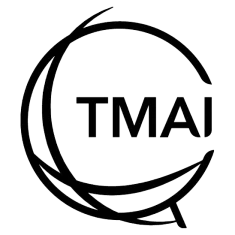
Seminary educational organizations trust Classter as their SIS system. Classter team worked with The Master’s Academy International, a registered nonprofit organization, providing financial and academic support to ministry and pastoral training centers in 12 countries. Classter helped TMAI accommodate all operations under one roof and automate its Admission Process, District Management and Hybrid Learning.

Classter collaborated with Global School for Entrepreneurship, a higher education organization providing international students with B. Sc., Pre-M. Sc., M. Sc., and other entrepreneurship-related degrees. Classter aided GS4E in simplifying its procedures, supplying faculty with the means to communicate more efficiently with their students and managing academics more easily. Furthermore, the seamless integration of Canvas LMS and Zoom enables educators and learners to swiftly transition to remote learning based on a unified curriculum.
Empowering Education with Smart Solutions

Personalized User Portals
Classter provides dedicated portals for students, teachers, and parents, fostering a connected and supportive educational community. Engage more effectively, ensuring everyone is involved and informed.
Comprehensive Curriculum Management
Easily design and manage curriculums with Classter’s flexible builder, adapting to diverse educational needs. Streamline your planning, save time, and meet every student’s academic goals.
Efficient Admissions and Registrations
Speed up student enrollments with Classter’s smooth, secure admissions process. Reduce paperwork, eliminate errors, and welcome new students with ease.
Innovative Timetable Creation
Create multiple, efficient timetables with Classter, accommodating everyone’s needs. Simplify scheduling, maximize resource use, and ensure smooth daily operations.
Advanced Security and Customization
Enjoy robust security and customizable features with Classter hosted on Microsoft Azure. Protect data, tailor experiences, and maintain a secure, adaptable environment.
Seamless Third-Party Integrations
Classter integrates with over 40 essential tools like Office 365 and Google Workspace, enhancing connectivity and workflow. Streamline operations and keep all your tools in sync.

98% User Satisfaction Rating
Classter is featured on Capterra & SourceForge as a great choice for educational organizations.

Socrates M.
Director, xtmpi.
“A great experience built on professionalism and trust.”
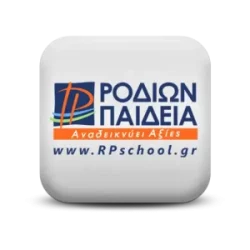
IT Manager, Rodion Pedia
“The benefits of using this software is that you can manage, teach and administrate your school by only using this software. Teachers can manage their class and students have access to lessons from their home.”

Panagiotis K.
It manager, palladio.
“The software acts as a frame of reference in all aspects of our school's operation: grades, tuition fees, communication with parents and alumni etc. This integration boosted our own business efficiency.”

Constant K.
“Classter is a platform that came to solve a lot of difficulties in our system.”

Administrative Employee, Georgia’s Innovation and Technology Agency
“The multiple third-party integrations are very useful and make the implementation process very easy and secure.”

Zuzana Michalkova
Head of operations, gs4e.
“Classter offers an intuitive SIS solution that helped us improve the overall experience for our faculty and students. With a cloud-based system in place, we're ready to expand GS4E into new locations.”

IT Manager, American Academy Nicosia
“A complete Student Management Information System at a competitive price and excellent support.”

John Hughes
Senior vp academics, tmai.
“We needed a cloud-based SIS that would allow us to have centralized management of our student data in 12 different countries. Classter provides us with a robust and secure solution to meet this goal.”

Steffen Schörner
Ceo, ahf grundschule.
“We are happy Classter exists as a very superior tool for our school. Classter offers unique approaches and adequate solutions for almost any process we can think of. I feel the passion of the whole Classter Team to make the tool better and better.”

Mariella Coto
Digital transformation director, ucreativa.
“We are a very particular university with a certain complexity that required many hours of work between the teams of both organizations. However, the availability of the Classter team was exceptional. The Classter team made sure to adjust the system to our needs and implement development to make it work for us. There was a lot of patience and flexibility.”

Classter is an Award Winning Software & a Leader in Edtech Revolution
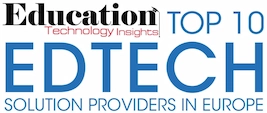
Frequently Asked Questions
Classter is an end-to-end Student & Learning Management System for any organization that offers educational or training services that will help you manage your processes and digitalize your school to save time and money. With Classter, you can get rid of your fragmented IT infrastructure. That’s because Classter combines the functionality of 5 different types of solutions: SIS, SMS, LMS, ERP, and CRM in 12 Modules.
Classter provides a reliable centralized cloud-based environment for storing and accessing students’ and faculty data, with the security of MS Azure infrastructure. Classter uses Azure Backup to provide clients with secure and reliable backup and disaster recovery solutions.
Classter offers customers the choice between an annual and bi-annual billing plan. If you choose the former option, your subscription will be invoiced and billed every year. For those who opt for a bi-annual subscription, the process will only happen every two years, plus you can benefit from a discount of up to 20% on your total fees!
Classter is versatile and fully adaptable. It offers tailored solutions for Higher Education, Academies and Training Centers, K12 Schools, Seminary Education, Corporate Learning, and School Districts. The platform is designed to meet the unique requirements of each educational segment.
Absolutely! Classter’s modular approach allows complete customization to suit your institution’s unique needs. You can select and integrate specific modules for a tailored solution, ensuring flexibility and efficiency in meeting your educational requirements.

Join Hundreds of Organizations that use Classter to Boost their Efficiency & Streamline Process
With a platform that will make the management of every aspect of your institution seamless & efficient, you’ll unlock the full potential of your institution. Our team is always ready to help you get started.

Book a meeting!

Activist, journalist, and founder of Ms. magazine, Gloria Steinem is a renowned leader and spokesperson for the American feminist movement.
Managing an Education Institution has never been Easier
Soop makes it easy to manage financials , academics , communication and support ..
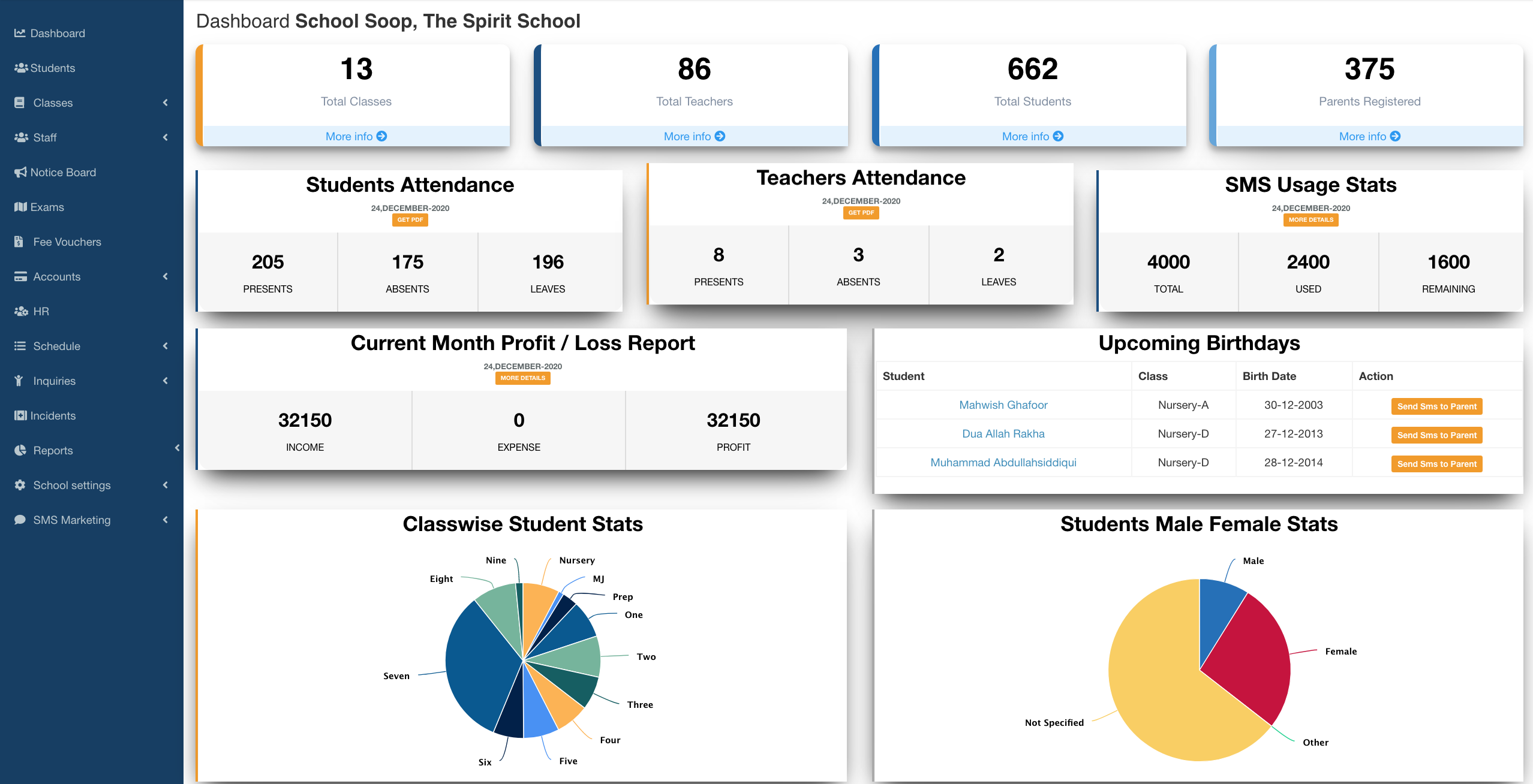
School Management System. The modern school management software that is easier to use.
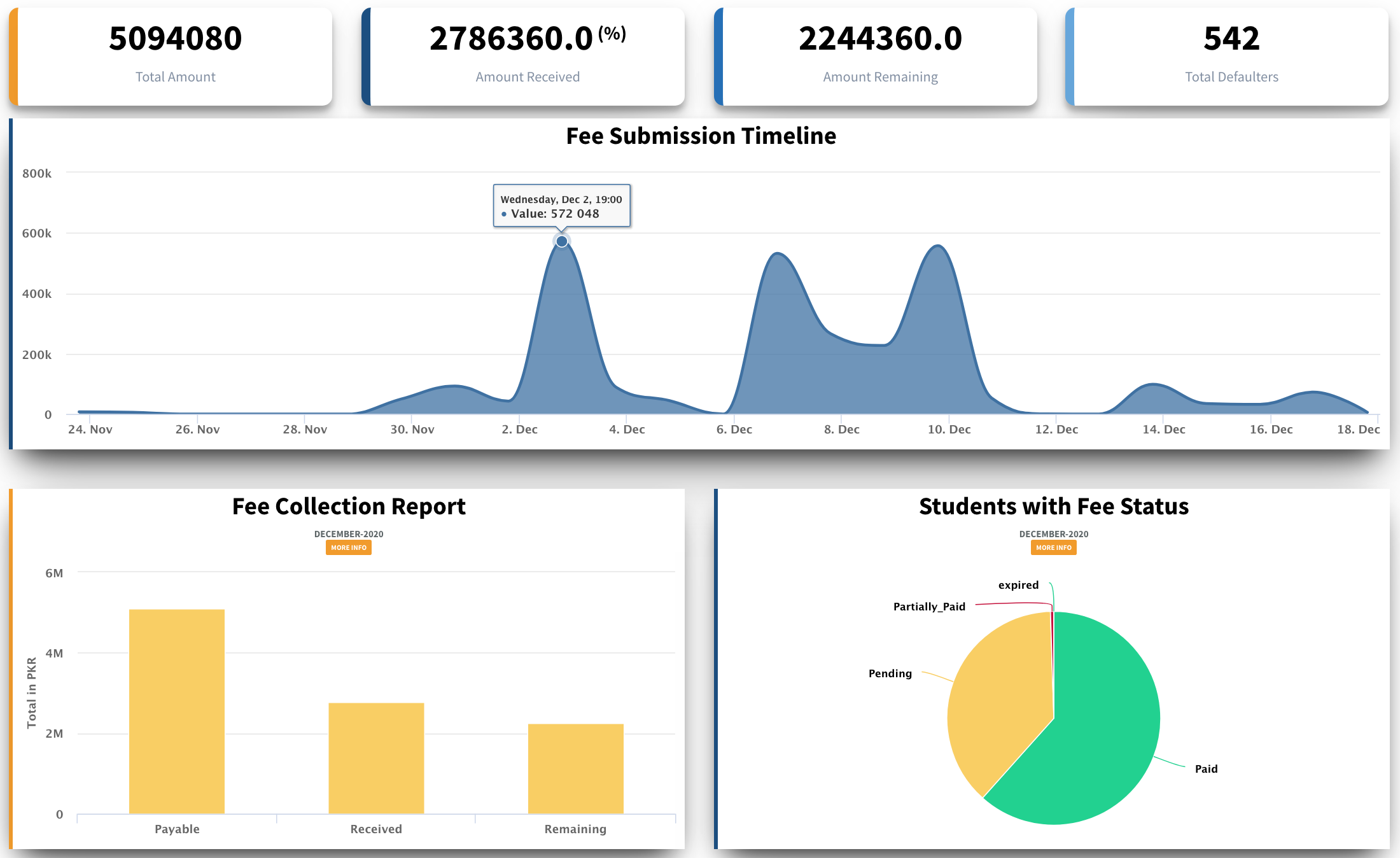
Effortless financial management. Generate voucher, recieve fee and report collection in minutes.
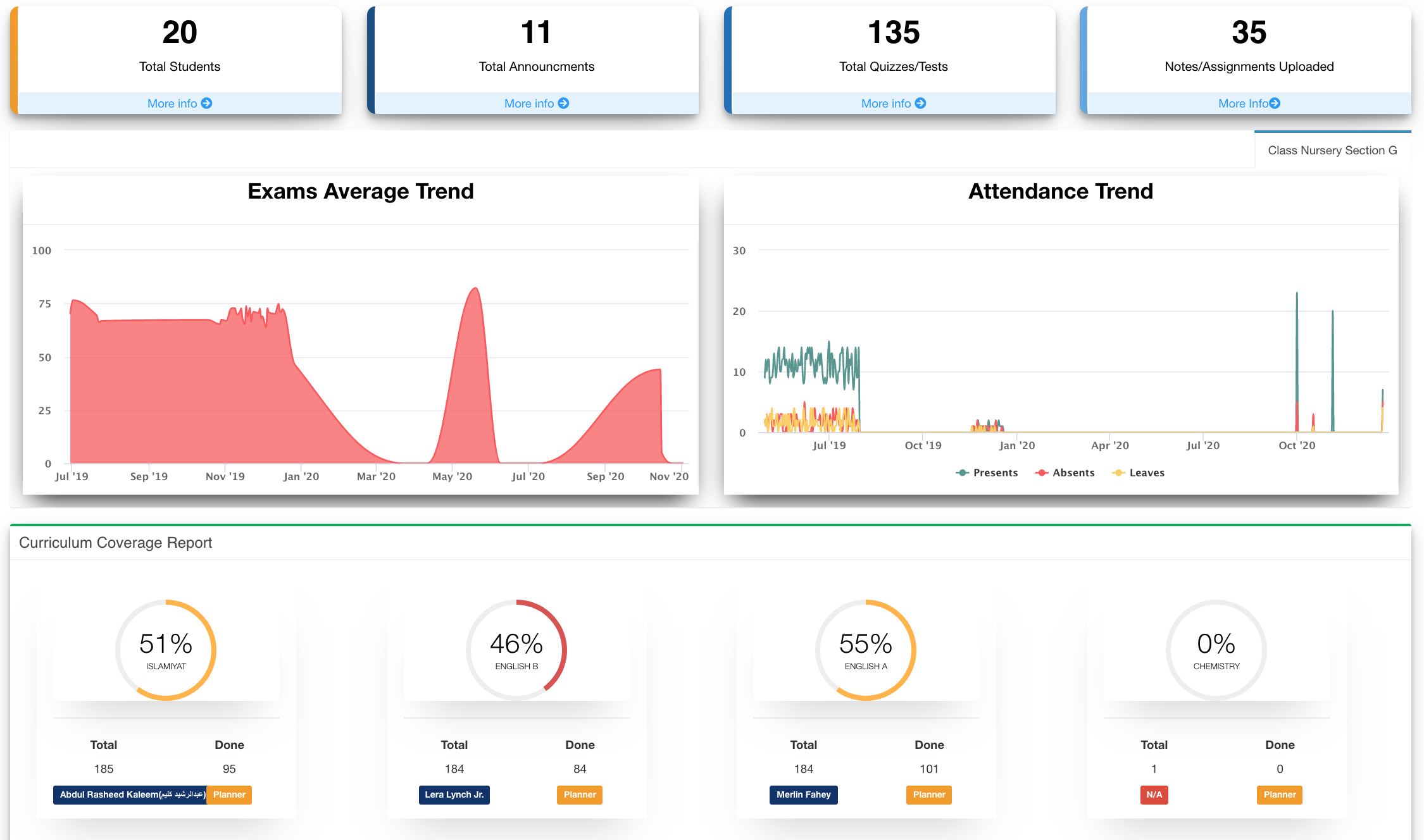
Mark exams. Track planner progress. Monitor Class Performance.
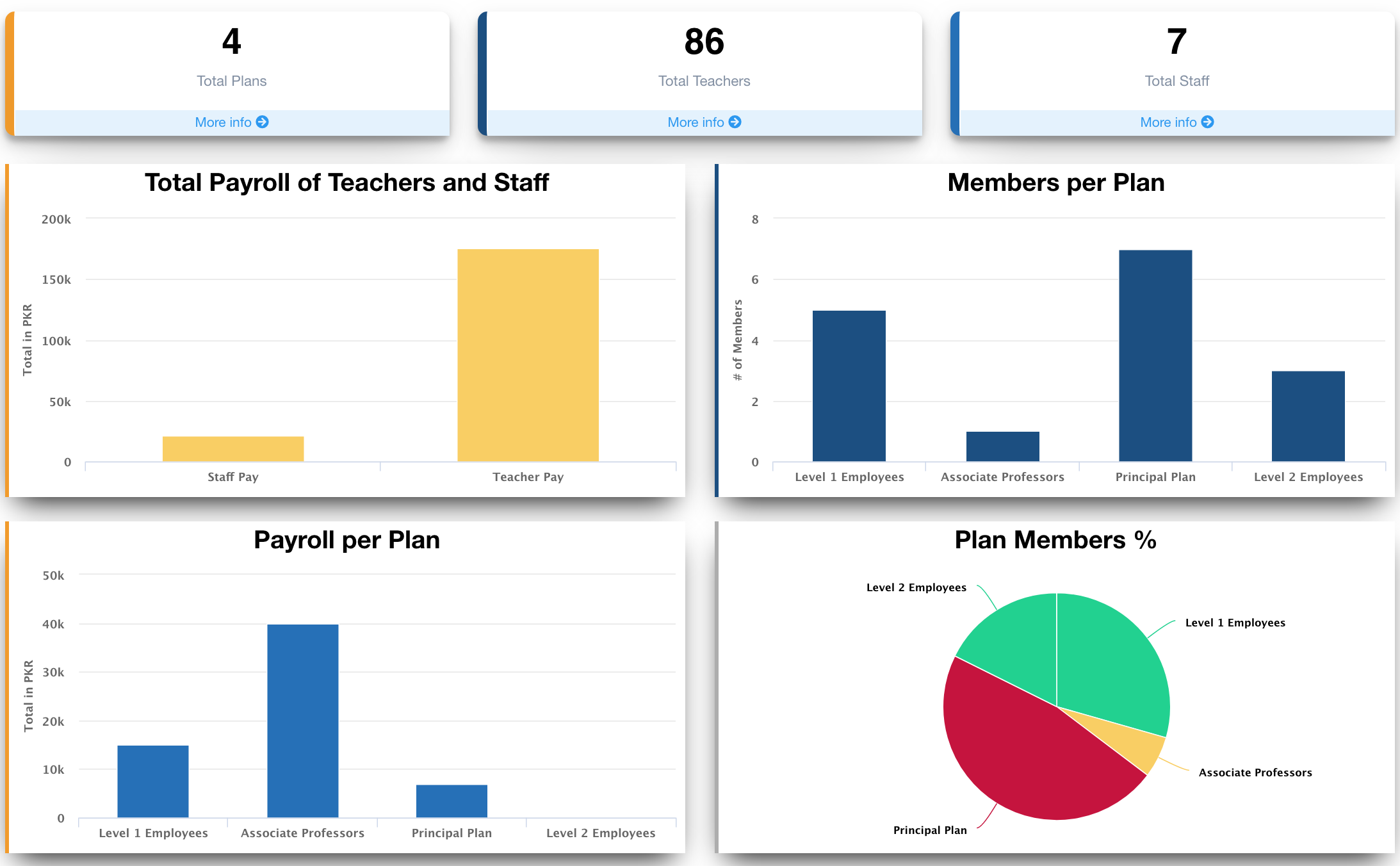
Effective staff management. Assign. Monitor.Appreciate.
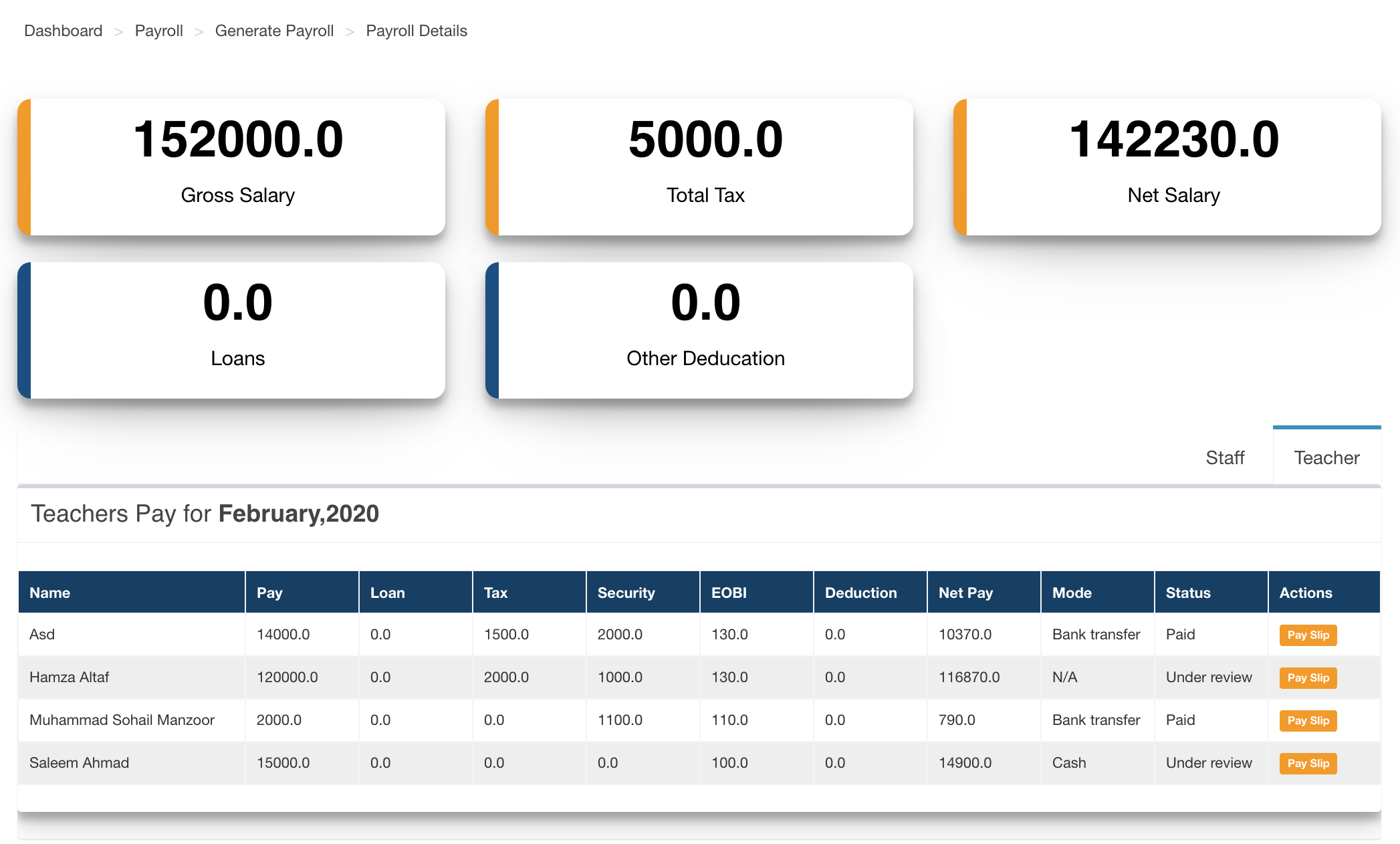
Payroll that runs itself. Pay your team in minutes.
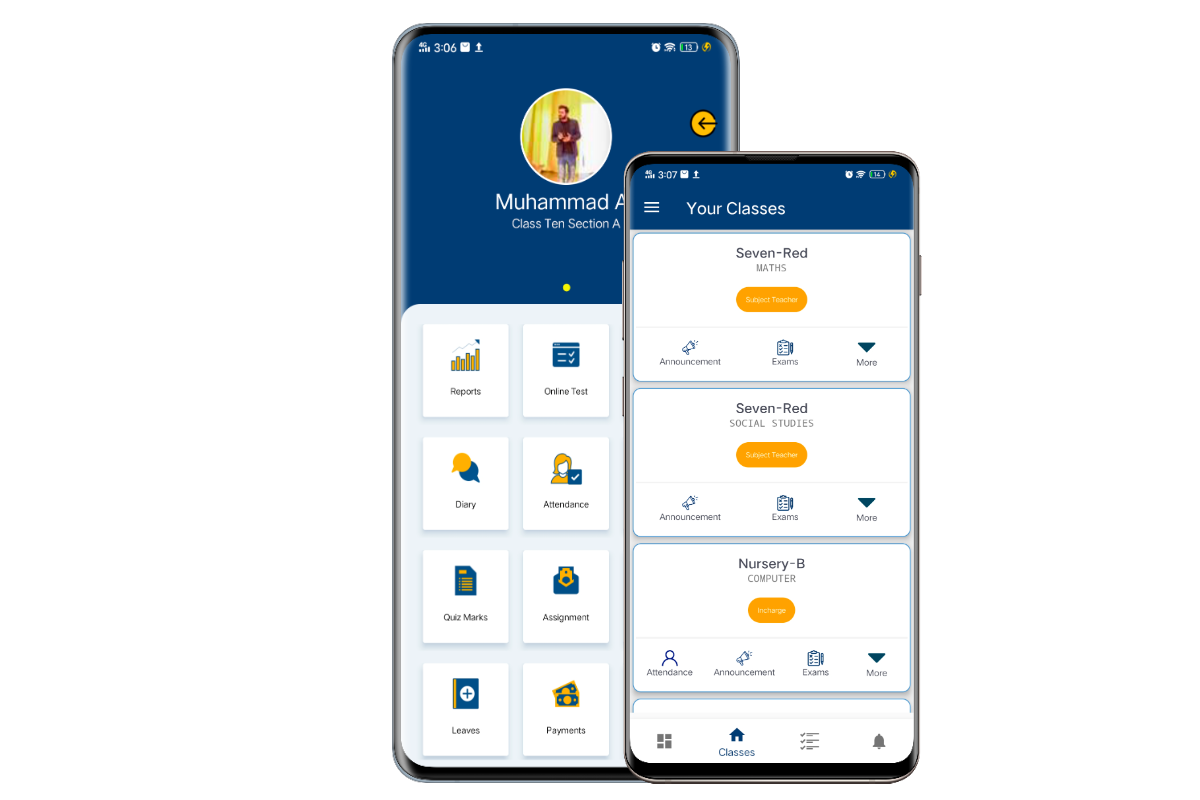
Mobile. Stay connected no matter where you are.
Bring your people together in one place..

Stay up to date with the pulse of your school using tailored analytics to help you make informed decisions.

Traceability of payrolls and tuitions down to every Rupee. All your financial operations under one roof.

Instant access to everything in a new, digital way. Singular knowledge base of testbanks and reading materials.

Consolidated view of teachers' classes and sections, with easy paperless tools for every purpose.

Complete peace of mind with instant access to report cards, circulars, fee vouchers and class performance.

Give your people easy access to the right information so everyone stays in sync.
Soop is available on app store and play store ., get soop apps to increase parents satisfaction and to effectively monitor staff's performance..
“SOOP HR module took care of the tedious HR tasks and gave us the freedom to focus on other parts of our business.”

Supporting 200+ institutions to manage their communication, financials and academics.
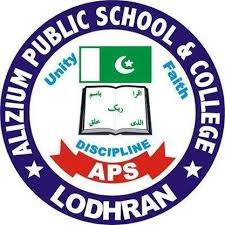
Hassle-free school management.
200+ schoools and counting., 100k students are actively using soop., 75% of customers are likely to recommend soop., 90% of customers told us switching to soop is easy..

Our Investors

Get a free demo of the SOOP platform.
“soop administration platform took care of the tedious administrative tasks and gave us the freedom to focus on other parts of our business.”.
Sunil, Chief Auditor Cathedral School
“Customer support was always readily available and very helpful.”
Waheed Khan, Owner; City College of Science & Commerce
“We choose SOOP because of the value that it gives. It’s seamlessness and its user interface …. It’s very intuitive.”
SamiUllah, Owner Avalon High

Help us get to know you better
The school management platform for academics, financials, communication and much more..
Navigation Menu
Search code, repositories, users, issues, pull requests..., provide feedback.
We read every piece of feedback, and take your input very seriously.
Saved searches
Use saved searches to filter your results more quickly.
To see all available qualifiers, see our documentation .
school-management-system
Here are 24 public repositories matching this topic..., 4jean / lav_sms.
Laravel School Management System (LAVSMS)
- Updated Mar 6, 2024
yungifez / skuul
A multi school management system
- Updated Apr 6, 2024
Appsource-Technologies / Appsource-School-Management-System
The Ultimate school management software. For the free Schoolskipper School system go to: https://schoolskipper.org
- Updated Mar 2, 2023
aisuresh / School-Management-System
SaaS based School Management System (SMS) to manage all school related activities. It aids to automate over all process and functions of any school. Easy to use and manage.
- Updated May 29, 2021
mahmoudai1 / school-management-system
School Management System developed by PHP and MySQL.
- Updated Nov 24, 2023
AhmedIssa11 / School-Management-System
- Updated Oct 11, 2022
Darkseidsam7 / School-Management-System
Full School Management System with Database
- Updated Apr 5, 2021
TheCodeDaniel / Student-Dashboard-Admin
Student dashboard (user end) with laravel
- Updated Apr 15, 2023
abkarim / school-management-system
School management system in decoupled architecture
- Updated Feb 20, 2024
TheCodeDaniel / Student-Dashboard
Student dashboard registration built with Laravel and tailwind CSS
Chamith-Nimmitha / Online-School-Management-System
Online school management system
- Updated Sep 24, 2022
sherryjamali / School-Management-Software-PHP
100% FREE all-in-one simple to use complete school management software.
- Updated May 21, 2022
manharsharma007 / School-Management-System-lite
Lite School Management System implemented using Tiny-MVC-Framework
- Updated May 9, 2019
aammui / SMS
- Updated Jul 22, 2018
Michaux-Technology / Software-zur-Schulverwaltung
Software, die die Verwaltung der Schüler einer Schule ermöglicht
- Updated Apr 9, 2024
fathi-riham-mn / School-Student-Management-System
School Student Management System developed by the Binary Brains Group for the Open University of Sri Lanka (OUSL)
- Updated Jan 13, 2024
sherryjamali / sherryjamali
Ggreenaz / dadcheckin.
Meet dadCHECKIN 🌟 The Open Source Project Even Your Dad Can't Mess Up! The Down and Dirty Check-in Project. Ever wished for a check-in system so simple that even your tech-challenged dad could use it without calling you for help? Well, wish no more! Presenting dadCHECK-IN, the ultimate, no-frills check-in too.
- Updated Dec 18, 2023
meliani / carrieres
This is and internship management system made from scratch with Loveravel :D
- Updated Apr 19, 2024
DanielWTE / project-student-mgmt
School Management System - Draft
- Updated Feb 2, 2023
Improve this page
Add a description, image, and links to the school-management-system topic page so that developers can more easily learn about it.
Curate this topic
Add this topic to your repo
To associate your repository with the school-management-system topic, visit your repo's landing page and select "manage topics."
- Bibliography
- More Referencing guides Blog Automated transliteration Relevant bibliographies by topics
- Automated transliteration
- Relevant bibliographies by topics
- Referencing guides
Academic literature on the topic 'School Management System'
Create a spot-on reference in apa, mla, chicago, harvard, and other styles.
Consult the lists of relevant articles, books, theses, conference reports, and other scholarly sources on the topic 'School Management System.'
Next to every source in the list of references, there is an 'Add to bibliography' button. Press on it, and we will generate automatically the bibliographic reference to the chosen work in the citation style you need: APA, MLA, Harvard, Chicago, Vancouver, etc.
You can also download the full text of the academic publication as pdf and read online its abstract whenever available in the metadata.
- Journal articles
- Dissertations / Theses
- Book chapters
- Conference papers
Journal articles on the topic "School Management System":
Muhammad Yani, Fahru Rizal, and Muhammad Reza Padillah. "CONTENT MANAGEMENT SYSTEM FOR SCHOOL INFORMATION WEBSITE." MULTICA SCIENCE AND TECHNOLOGY (MST) 1, no. 1 (April 13, 2021): 28–35. http://dx.doi.org/10.47002/mst.v1i1.203.
Riswanto, Nyoto Suseno, Partono, Purwiro Harjati, and HA Dedy. "School Laboratory Management Information System." Journal of Physics: Conference Series 1361 (November 2019): 012068. http://dx.doi.org/10.1088/1742-6596/1361/1/012068.
Arar, Khalid, and Amal Abu-Romi. "School-based management: Arab education system in Israel." Journal of Educational Administration 54, no. 2 (April 11, 2016): 191–208. http://dx.doi.org/10.1108/jea-09-2014-0118.
Salvioni, Daniela M., and Raffaella Cassano. "School Governance, Accountability and Performance Management." International Journal of Financial Research 8, no. 2 (February 28, 2017): 176. http://dx.doi.org/10.5430/ijfr.v8n2p176.
Hamad, Kawther Younes, and Amneh Said Ahmad. "Computerized Pedagogical Management among School Teachers." Journal of Education and Culture Studies 3, no. 2 (April 4, 2019): 82. http://dx.doi.org/10.22158/jecs.v3n2p82.
Attri, Rekha, and Rahul Bairagi. "Performance management system – Core Business School." CASE Journal 13, no. 2 (March 6, 2017): 294–307. http://dx.doi.org/10.1108/tcj-06-2016-0051.
Wang, Jian Fa, Juan Liu, and Liang Yu Jiao. "Student Information Management System Based on Android Platform." Advanced Materials Research 1006-1007 (August 2014): 1057–60. http://dx.doi.org/10.4028/www.scientific.net/amr.1006-1007.1057.
Al-Hilali, Z. S. H. "Scheduling as a part of School Management System." Bulletin of Taras Shevchenko National University of Kyiv. Series: Physics and Mathematics , no. 2 (2019): 77–81. http://dx.doi.org/10.17721/1812-5409.2019/2.9.
Siraj, Siraj, Sayni Nasrah, and Trisfayani Trisfayani. "The System Approach in the Perspective of Law Number 20 of 2003 concerning the National Education System." International Journal for Educational and Vocational Studies 1, no. 1 (May 7, 2019): 47. http://dx.doi.org/10.29103/ijevs.v1i1.1465.
Hadian, Dedi. "The Development of Quality Management System ISO 9001." INTERNATIONAL JOURNAL OF MANAGEMENT SCIENCE AND BUSINESS ADMINISTRATION 4, no. 4 (2018): 56–60. http://dx.doi.org/10.18775/ijmsba.1849-5664-5419.2014.44.1007.
Dissertations / Theses on the topic "School Management System":
Kulík, Lukáš. "Návrh a analýza modulů systému student - school relationship management." Master's thesis, Vysoká škola ekonomická v Praze, 2012. http://www.nusl.cz/ntk/nusl-162527.
Yeung, King-sing. "A Knowledge Management System for school assessment." Click to view the E-thesis via HKUTO, 2004. http://sunzi.lib.hku.hk/hkuto/record/B40039900.
Yeung, King-sing, and 楊景城. "A Knowledge Management System for school assessment." Thesis, The University of Hong Kong (Pokfulam, Hong Kong), 2004. http://hub.hku.hk/bib/B40039900.
Woody, Jeffrey L. "A classroom information management system /." Connect to unofficial online version of: A classroom information management system, 2005. http://minds.wisconsin.edu/bitstream/1793/18751/1/WoodyJeff.pdf.
Shipp, J. D. "Professional Development Needs of Elementary School Principals Implementing Site-Based Management in an Urban School System." Thesis, North Texas State University, 1985. https://digital.library.unt.edu/ark:/67531/metadc331578/.
Bowmaker, Luke. "A customisable management information system for Woodkirk High School /." Leeds : University of Leeds, School of Computer Studies, 2008. http://www.comp.leeds.ac.uk/fyproj/reports/0708/Bowmaker.pdf.
Davidson, Elizabeth J. "Framing information systems requirements : an investigation of social cognitive processes in informatin system delivery." Thesis, Massachusetts Institute of Technology, 1996. http://hdl.handle.net/1721.1/11178.
Nkambule, Samson Gugulethu. "How school management teams view and experience implementation of the integrated quality management system." Diss., University of Pretoria, 2010. http://hdl.handle.net/2263/25324.
Kimber, Michael A. (Michael Allan) 1971. "Definition and implementation of a visual inventory management system." Thesis, Massachusetts Institute of Technology, 1999. http://hdl.handle.net/1721.1/9777.
Leika, Mindaugas. "System dynamics, market microstructure and asset pricing." Thesis, Massachusetts Institute of Technology, 2013. http://hdl.handle.net/1721.1/81065.
Books on the topic "School Management System":
W, Harris George. Management of the public school logistical system . Springfield, Ill: C.C. Thomas, 1985.
Shindler, Keith James. Online time management system for a secondary school. Oxford: Oxford Brookes University, 2002.
Gaffney, Michael. Pathways to school system improvement . Camberwell, Vic: ACER Press, 2014.
Singhal, R. P. School inspection system: A modern approach . New Delhi: Vikas, 1986.
Singhal, R. P. School inspection system: A modern approach . New Delhi, India: Vikas Publishing House, 1986.
Bloomer, Keir. Decentralising the education system . London, England: Commonwealth Secretariat, Education Programme, Human Resources Development Group, 1991.
Iram, Yaacov. The educational system of Israel . Westport, Conn: Greenwood Press, 1998.
Udoh, Sunday. Personnel management in the Nigerian school system: Theory and practice . Jos: TechSource Electronic Pub., 1988.
Shami, Pervez Aslam. Educational planning and management & management information system: Terms, concepts and definitions . Islamabad: Academy of Educational Planning and Management, Ministry of Education, 2006.
Adepoju, T. L. Nigerian educational system at a glance . [Ibadan, Oyo State, Nigeria: Educational Industries (Nig.) Ltd., 2006.
Book chapters on the topic "School Management System":
Cheng, Eric C. K. "Institutionalising a School Knowledge Management System." In Knowledge Management for School Education , 59–70. Singapore: Springer Singapore, 2014. http://dx.doi.org/10.1007/978-981-287-233-3_6.
Sagi, Ilana, Yaffa Gev, and Ahuva Feinmesser. "School Management Information System Authority in Israel." In Information Technology in Educational Management , 79–84. Boston, MA: Springer US, 1995. http://dx.doi.org/10.1007/978-0-387-34839-1_10.
Sexton, Thomas R., Christie Comunale, Michael Shane Higuera, and Kelly Stickle. "Performance Benchmarking of School Districts in New York State." In System Dynamics for Performance Management , 373–96. Cham: Springer International Publishing, 2017. http://dx.doi.org/10.1007/978-3-319-57018-1_19.
Strickley, Alan. "A Baseline for a School Management Information System." In Information Technology and Managing Quality Education , 62–74. Berlin, Heidelberg: Springer Berlin Heidelberg, 2011. http://dx.doi.org/10.1007/978-3-642-19715-4_7.
Silverman, Stephan M., Jacqueline S. Iseman, and Sue Jeweler. "The Most Effective Treatment and Management System for ADHD." In School Success for Kids with ADHD , 101–26. New York: Routledge, 2021. http://dx.doi.org/10.4324/9781003237815-6.
de Forsberg, Nuzzly Ruiz. "State and Parental Roles in the Decentralised Education System in Nicaragua." In Decentralisation, School-Based Management, and Quality , 195–215. Dordrecht: Springer Netherlands, 2009. http://dx.doi.org/10.1007/978-90-481-2703-0_11.
Visscher, A. J., and E. M. Branderhorst. "How should School Managers be Trained for Managerial School Information System Usage?" In Pathways to Institutional Improvement with Information Technology in Educational Management , 147–58. Boston, MA: Springer US, 2002. http://dx.doi.org/10.1007/978-0-306-47006-6_11.
Voyer, John, Susan Bassi Brown, Nathan Gage, Dmitry Kovalenko, and Travis Williams. "A System Dynamics Approach to Improving an Advising System For Business School Undergraduates." In Higher Education Management and Operational Research , 125–52. Rotterdam: SensePublishers, 2012. http://dx.doi.org/10.1007/978-94-6091-976-3_8.
Ng, W. Y. "TESS: an interactive support system for school timetabling." In Information Technology in Educational Management for the Schools of the Future , 131–37. Boston, MA: Springer US, 1997. http://dx.doi.org/10.1007/978-0-387-35090-5_17.
Ribeiro Duthie, James. "Food from Somewhere: School Kitchen Garden Programs, Food Sovereignty and Food System Resilience." In Climate Change Management , 197–209. Cham: Springer International Publishing, 2020. http://dx.doi.org/10.1007/978-3-030-57235-8_16.
Conference papers on the topic "School Management System":
Sergis, Stylianos, Indrit Sholla, Panagiotis Zervas, and Demetrios G. Sampson. "Supporting school ICT uptake: The ASK School ICT Competence Management System." In 2014 International Conference on Interactive Mobile Communication Technologies and Learning (IMCL) . IEEE, 2014. http://dx.doi.org/10.1109/imctl.2014.7011164.
Kubo, H., H. Ohashi, M. Tamamura, and T. Kowata. "Shared questionnaire system for school community management." In 2004 International Symposium on Applications and the Internet Workshops. 2004 Workshops. IEEE, 2004. http://dx.doi.org/10.1109/saintw.2004.1268671.
Yun Cheng, Yanli Wang, Sanhong Tong, Feng Wang, and Zhongmei Zheng. "Design of School-based Resource total management system." In 2010 2nd International Conference on Education Technology and Computer (ICETC) . IEEE, 2010. http://dx.doi.org/10.1109/icetc.2010.5529721.
Cassano, Raffaella, and Daniela Salvioni. "Improvement of management performance in the School System." In The 3rd Virtual Multidisciplinary Conference . Publishing Society, 2015. http://dx.doi.org/10.18638/quaesti.2015.3.1.202.
Liu Yi and Cheng Ping-guang. "Design and implementation of school management service system." In 2nd International Conference on Computer and Automation Engineering (ICCAE 2010) . IEEE, 2010. http://dx.doi.org/10.1109/iccae.2010.5451567.
Prananosa, Ahmad Gawdy, Mochamad Wahyudi, and Suparno Eko Widodo. "Model Development of School Database Management Information System." In First International Conference on Technology and Educational Science . EAI, 2019. http://dx.doi.org/10.4108/eai.21-11-2018.2282111.
Marjudi, Suziyanti, Md Sidin Ahmad Ishak, Syahirah Ismail, Eda Suhana Sharudin, Ab Razak Bin Aripin, and Hafizah Khusni. "A Development of Tahfiz Selangor School System." In International Conference on Creative Economics, Tourism & Information Management . SCITEPRESS - Science and Technology Publications, 2019. http://dx.doi.org/10.5220/0009865400980103.
Voitsekhovskaya, Olga K., and C. V. Kusnetsov. "Relational database management system for high resolution spectroscopy." In High Resolution Molecular Spectroscopy: 11th Symposium and School , edited by Alexander I. Nadezhdinskii, Yu V. Ponomarev, and Leonid N. Sinitsa. SPIE, 1994. http://dx.doi.org/10.1117/12.166255.
Hasbullah. "Implementation of Learning Management System Model in Vocational School." In 2015 International Conference on Innovation in Engineering and Vocational Education . Paris, France: Atlantis Press, 2016. http://dx.doi.org/10.2991/icieve-15.2016.44.
Wijaya, Widia Murni. "Strategic Information System Planning: Information Systems Required in Vocational School Models." In 6th International Conference on Educational, Management, Administration and Leadership . Paris, France: Atlantis Press, 2016. http://dx.doi.org/10.2991/icemal-16.2016.16.
Reports on the topic "School Management System":
King, Mary M. An Investigation of the Role of Influence Behaviors in Information System Implementation: A Case Study of the Air Force Institute of Technology School of Engineering and Management Student Academic Support System . Fort Belvoir, VA: Defense Technical Information Center, March 2004. http://dx.doi.org/10.21236/ada422918.
Cilliers, Jacobus, Eric Dunford, and James Habyarimana. What Do Local Government Education Managers Do to Boost Learning Outcomes? Research on Improving Systems of Education (RISE), March 2021. http://dx.doi.org/10.35489/bsg-rise-wp_2021/064.
Carnes, James. A Study of Successful Management Teams in Oregon Public School Systems . Portland State University Library, January 2000. http://dx.doi.org/10.15760/etd.1230.
African Open Science Platform Part 1: Landscape Study . Academy of Science of South Africa (ASSAf), 2019. http://dx.doi.org/10.17159/assaf.2019/0047.
What caused Dubai floods? Experts cite climate change, not cloud seeding
- Medium Text
DID CLOUD SEEDING CAUSE THE STORM?

CAN'T CREATE CLOUDS FROM NOTHING
Sign up here.
Reporting by Alexander Cornwell; editing by Maha El Dahan and Alexandra Hudson
Our Standards: The Thomson Reuters Trust Principles. New Tab , opens new tab

Nigeria's oil regulator on Thursday clarified that recent changes to fuel sulphur content standards for diesel are part of a regional harmonisation effort, not a relaxation of regulations for local refineries.

World Chevron

Chef Jose Andres mourns World Central Kitchen workers killed in Gaza at Washington Cathedral
Celebrity Chef Jose Andres called seven aid workers killed by Israeli forces in Gaza "the best of humanity" on Thursday during a memorial service at the Washington National Cathedral that was attended by hundreds, and punctuated by grief and ongoing questions about the attack.


VIDEO
COMMENTS
Zoho, Classter, and feKara are good examples of a free school management system. Vendor-based: The software is available in both free and paid versions in this model. A vendor-based SMS is the best option if you don't want to wait for a customized system. Vendor systems are more adaptable than the free model.
The school management system's evolution has allowed massive amounts of data once categorized in many different programs to be compiled on a single platform enabling anyone within the organization ecosystem to access it and use it for various purposes. The SMS has streamlined the way schools do business, empowering them to be more efficient ...
Integrating School Management Systems is a systematic process that begins with a thorough needs assessment, identifying challenges and goals. The institution selects a suitable system, customizing it to align with specific workflows and configuring features accordingly. Data migration from present systems is an important step, ensuring a ...
Free version: Includes all the features.. Paid version: Users can enroll for paid technical service and maintenance support by experts.. Gibbon is a cloud-based open source school management system that offers a wide range of features. Being an open source tool, Gibbon is flexible and gives schools complete control and freedom to use the software however they want.
According to Mordor Intelligence, "The school information management system is expected to reach a CAGR of 13.5% during the forecast period (2021-2026). This is the predicted rate of return in investment terms. And, that makes sense considering the push towards digitalization in education, e-learning, and improving the quality of education ...
The practice of management is as old as human society, since it concerns the coordination of individual efforts toward a shared objective. It has gained prominence with the rise of modern society (Buble, 2011/2015). Further transformation of management in the twentieth century has been described by Drucker (1989/2011), in terms of application of knowledge to work processes and the emergence of ...
Pedagogy in Education 4.0 has been developed to respond to the demands of Industry 4.0 and has given new impetus to the transformations in education in terms of content, curriculum, and education management (Kin & Kareem, 2019 ). This dramatic change has caused changes in the future of education (Kassim & Teng, 2018 ).
A school management system is a software application that streamlines various educational processes within a school. It helps schools manage and organize their day-to-day operations, such as student information, staff information, finances, etc. A school administration platform typically includes several modules that handle different aspects of ...
A school management system, also known as School ERP (enterprise resource planning) is a software or a platform that simplifies and automates the day-to-day academic and administrative tasks. It enhances the digitization process for schools and benefits students, parents, teachers, and administrators.
This article uses three perspectives — bureaucratic, political and subjective — to analyse the management structure of a West Midlands comprehensive school. Partly on the basis of this analysis, the new headteacher modifed the school's structure. The article assesses the changes and the uses of the theoretical models.
How the school management system works is based on the idea that this technology is intended to help educational institutions with their day-to-day functioning by streamlining administrative tasks. These systems provide a wide range of services, including admission management and extensive performance monitoring.
Administrator's Plus. ★★★★★. ★★★★★. (1) Administrator's Plus is a cloud-based PK-12 student information system that lets educators, teachers, parents, and students work together. The software aids in attendance, report cards, scheduling, billing, and more. Administrator's Plus can help streamline administrative tasks and ...
The School Management System is an open-source software application that simplifies the various school administrations and colleges and brings together administrators, teachers, students, and parents. It is a web-based application for the effective and efficient administration of a school or university. The school management system helps manage ...
Ayotree is a cloud-based school management software suite that combines CRM, attendance, online payments, classroom scheduling, and online classrooms for virtual lessons. Ayotree began as an online language school software, featuring tools to help teachers and administrators manage…. 22.
2. brightwheel: Provides attendance-based billing. brightwheel is a school administration software solution built for daycare centers and educational institutes. It helps automate day-to-day operations such as attendance tracking, communication with parents, and staff management. With the software, you can manage the admission process for new ...
Gradelink. FrontRunners 2024. Gradelink is an internet-based school management solution that connects teachers, students, and parents through a single, easy-to-use platform. Schools worldwide use it to save time managing student enrollment, reporting attendanc... Read more. 4.7 ( 604 reviews) Compare.
A school management system not only gives information about students. It can provide real-time information about teachers activities also. School administrators can access a particular teachers class schedule, daily reports of the teacher, etc. With the Help of artificial intelligence school management systems can even monitor the performance ...
With a platform that will make the management of every aspect of your institution seamless & efficient, you'll unlock the full potential of your institution. Our team is always ready to help you get started. Classter is an end-to-end school management system. Remove the friction from managing all academic processes, end-to-end.
School Management System. Directorate of Secondary Education, Govt. of Tripura. Designed and developed by Sourav Karmakar.
Transform your school with our intuitive Django School Management System. Seamlessly manage payments, simplify e-admissions, and track results effortlessly, all through a user-friendly interface. Developed using Python Django, our comprehensive system enhances your school's efficiency. Experience the future of education management today.
Contact Us. Contact. [email protected] [email protected] [email protected] +92 300 0760095. SOOP offers the school management platform to elevate your staff, teachers, students and parents. Virtual classes, financials, academics, communication and much more in one place.
School Student Management System developed by the Binary Brains Group for the Open University of Sri Lanka (OUSL) mysql php codeigniter xampp school-management-system Updated Jan 13, 2024; PHP; sherryjamali / sherryjamali Star 1. Code Issues Pull requests 100% FREE all-in-one simple to use complete school management software. ...
Video (online) Consult the lists of relevant articles, books, theses, conference reports, and other scholarly sources on the topic 'School Management System.'. Next to every source in the list of references, there is an 'Add to bibliography' button. Press on it, and we will generate automatically the bibliographic reference to the chosen work ...
Information you can trust. Reuters, the news and media division of Thomson Reuters, is the world's largest multimedia news provider, reaching billions of people worldwide every day.